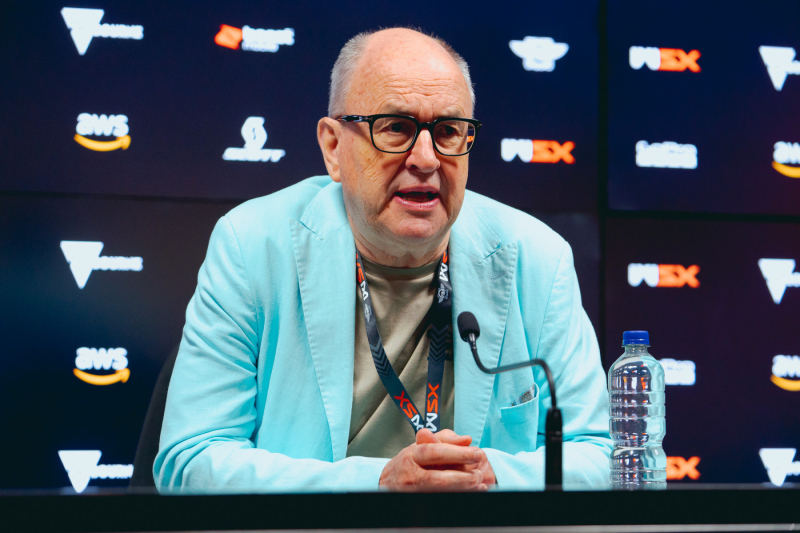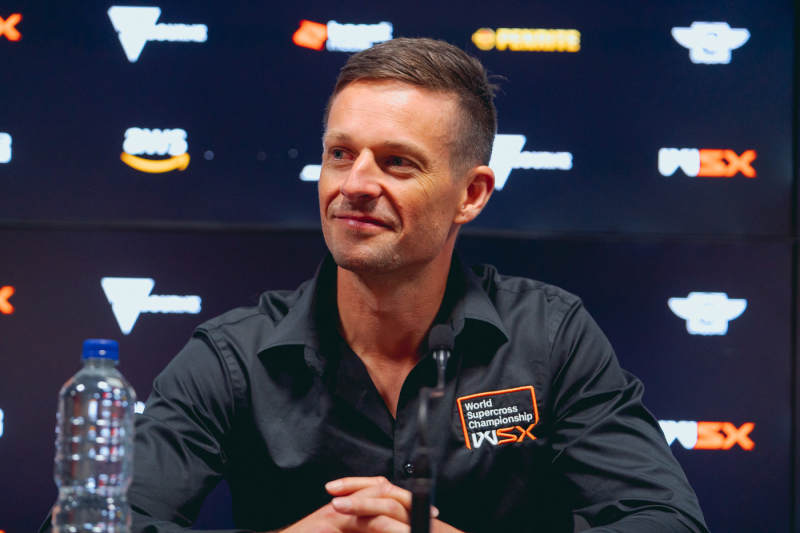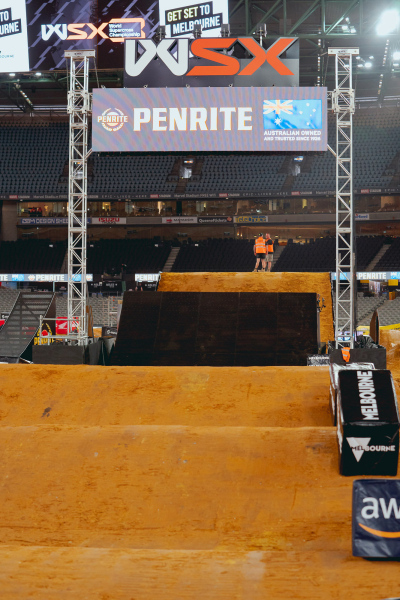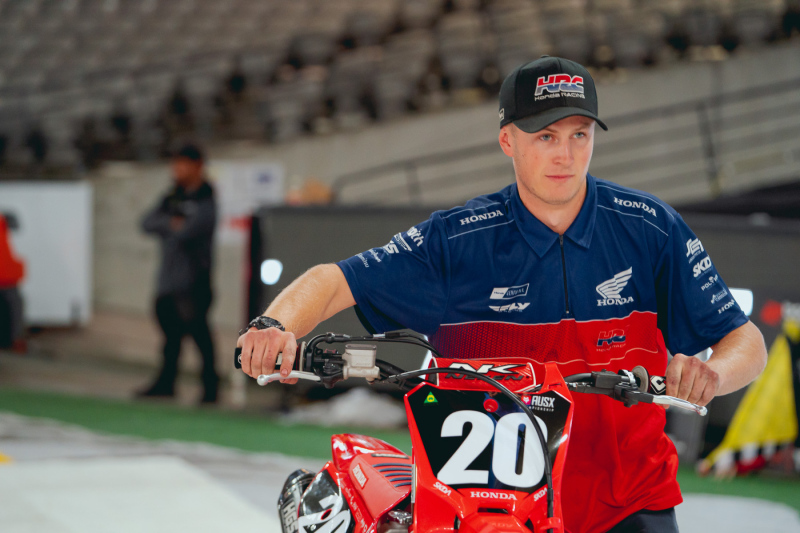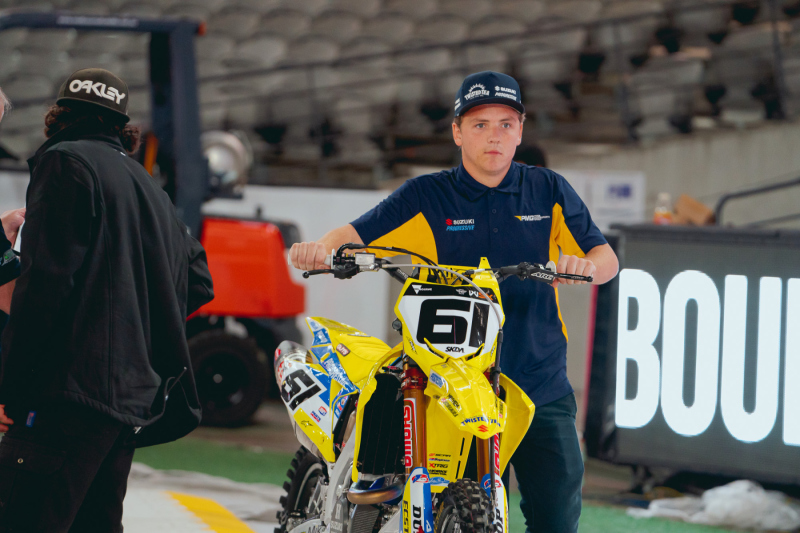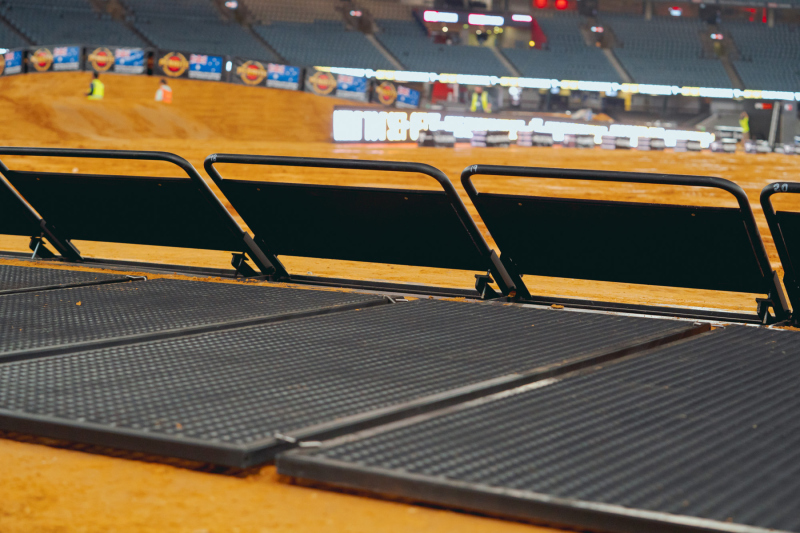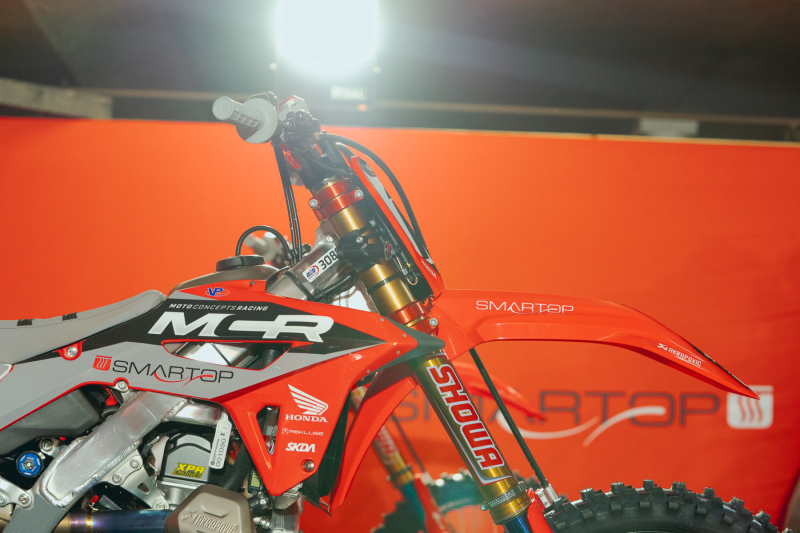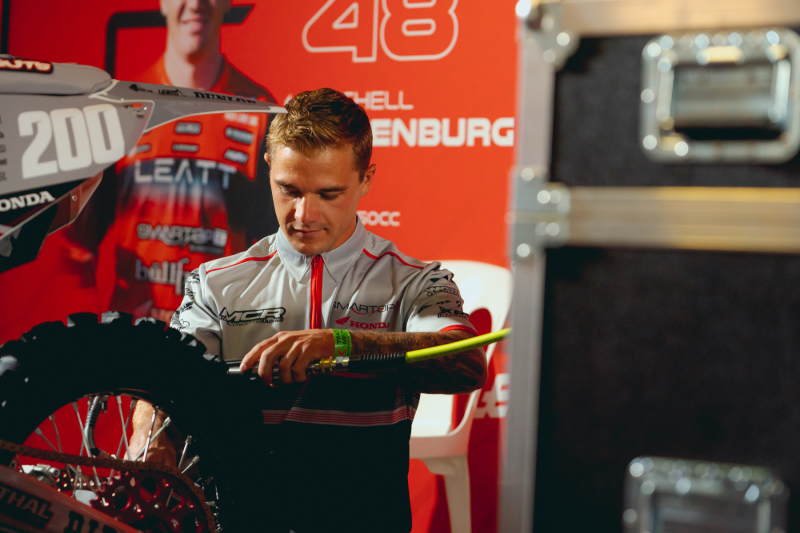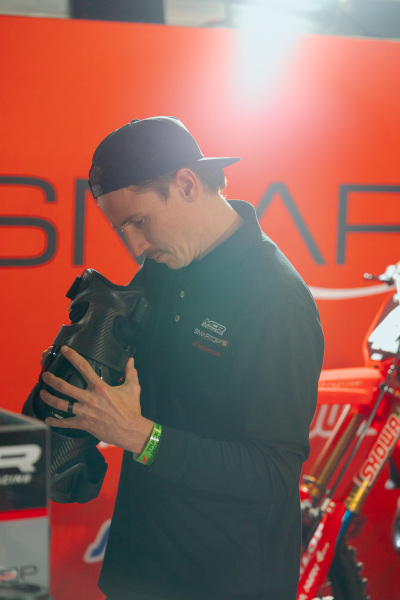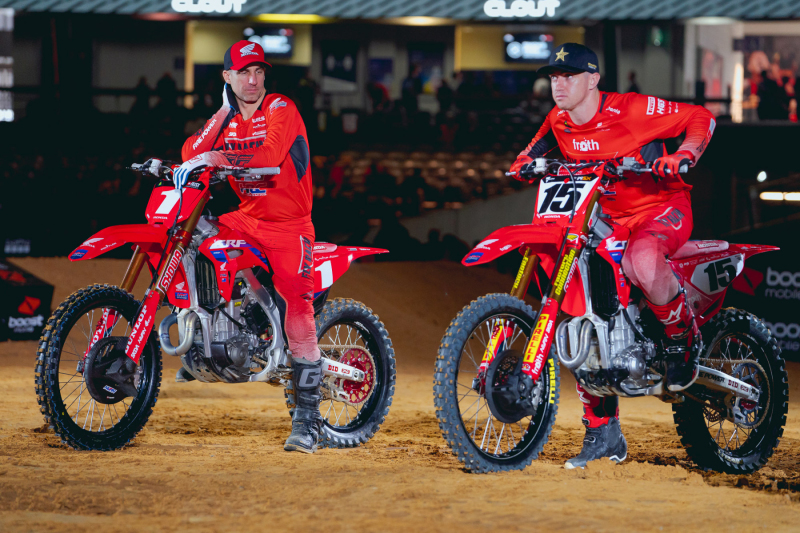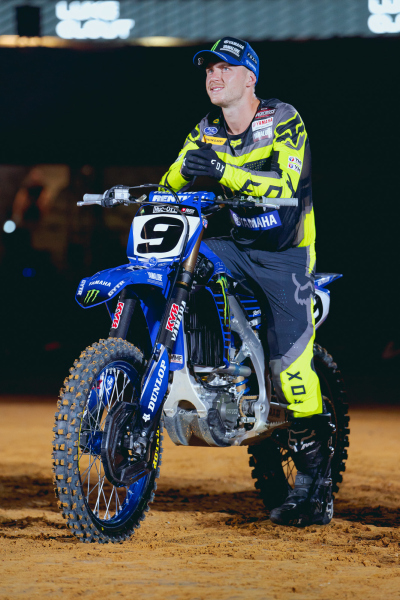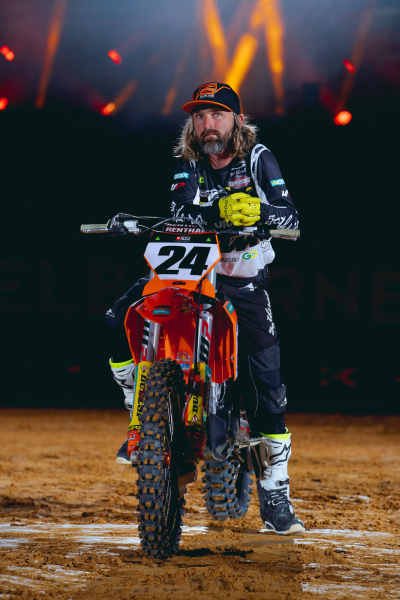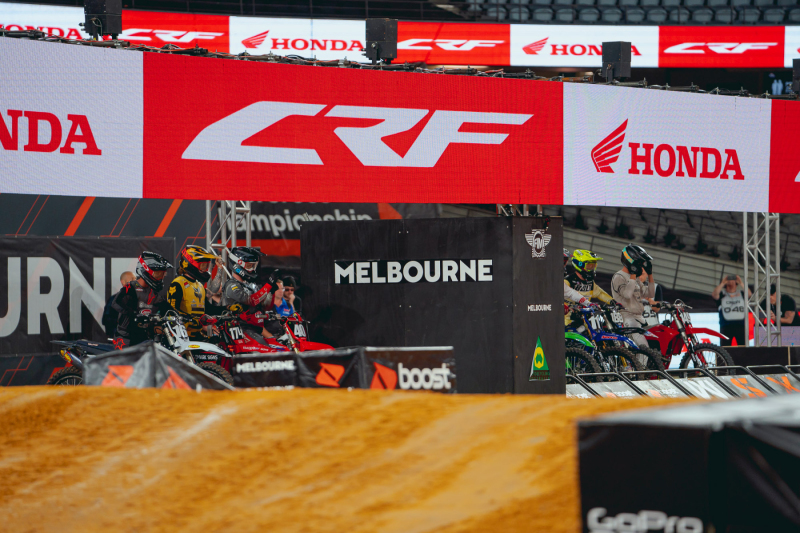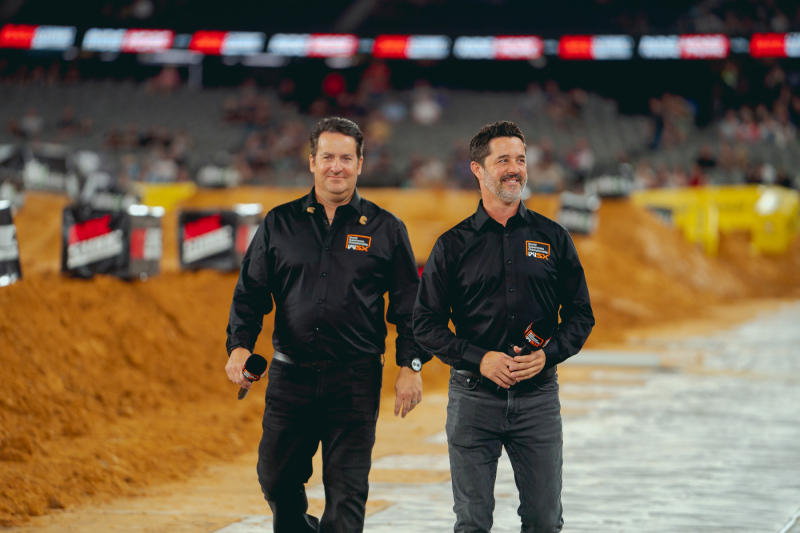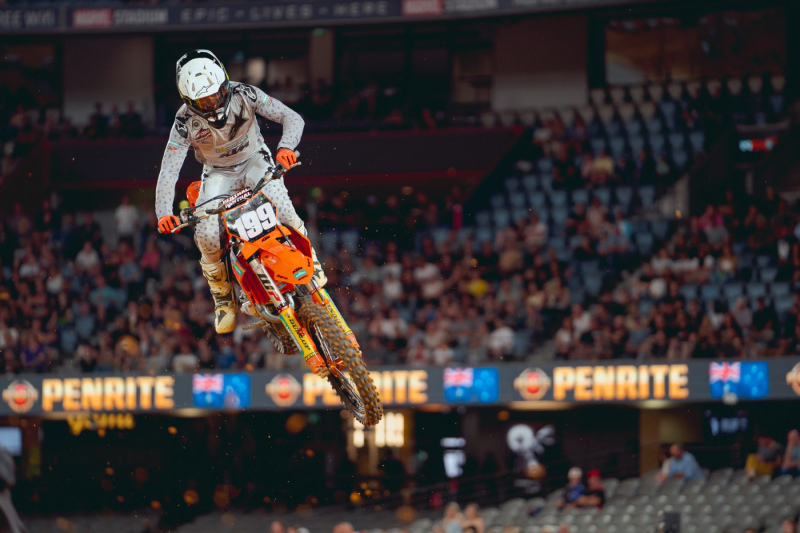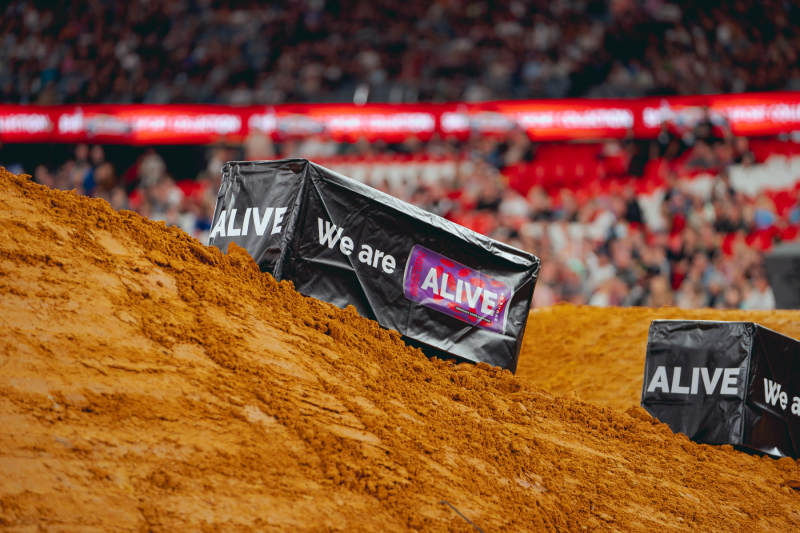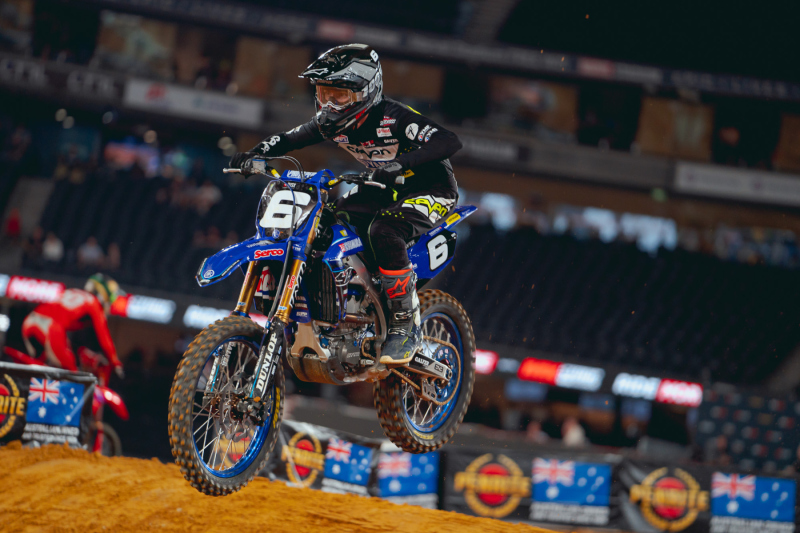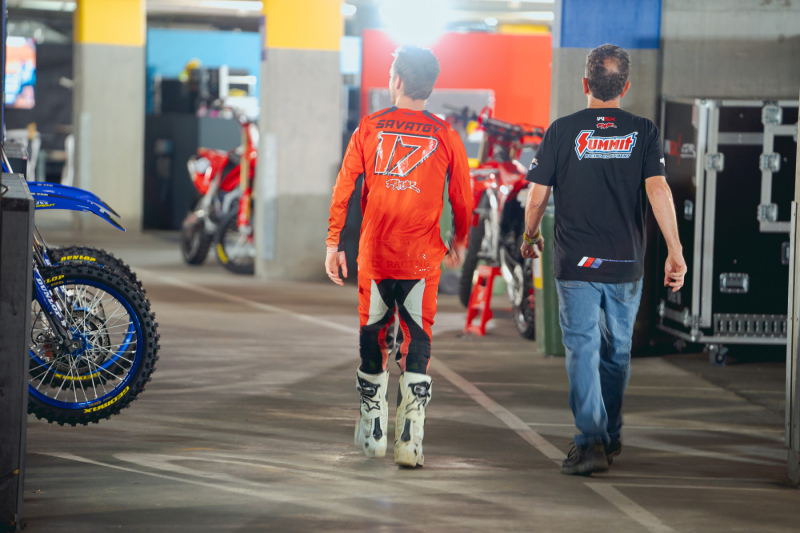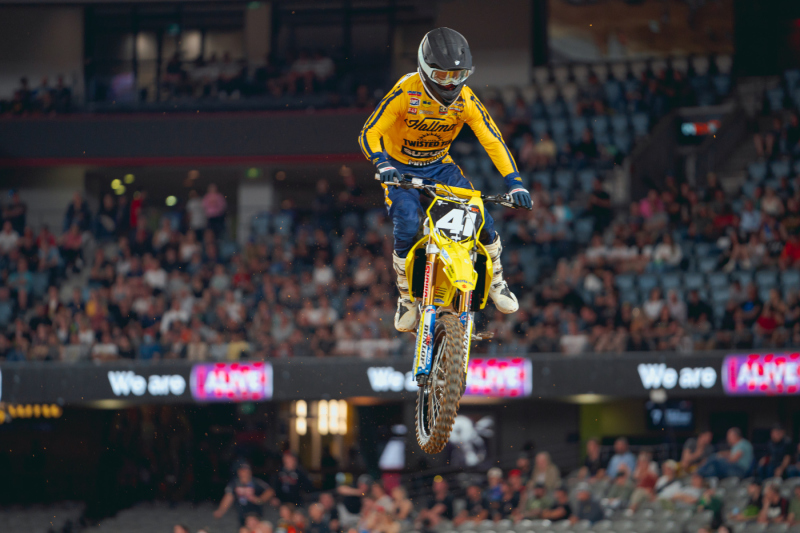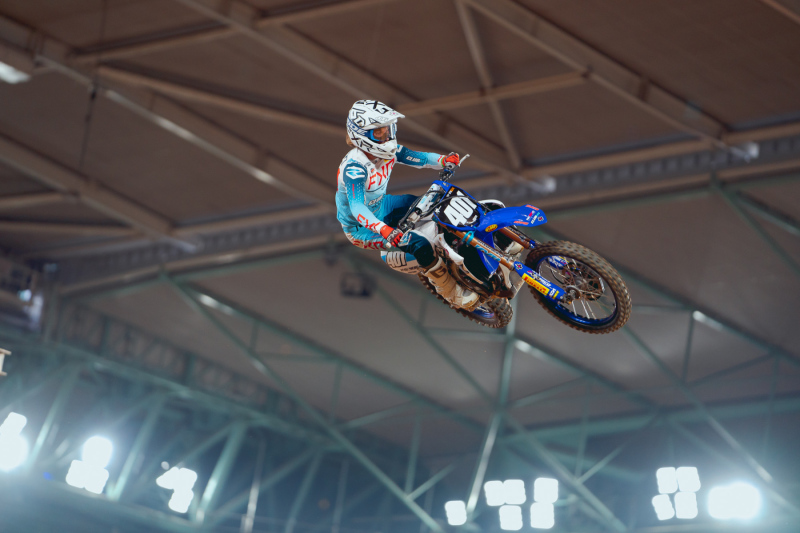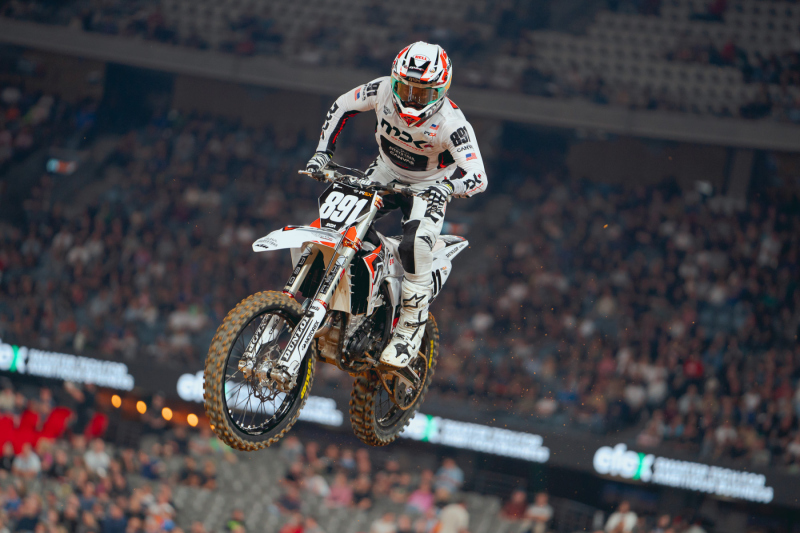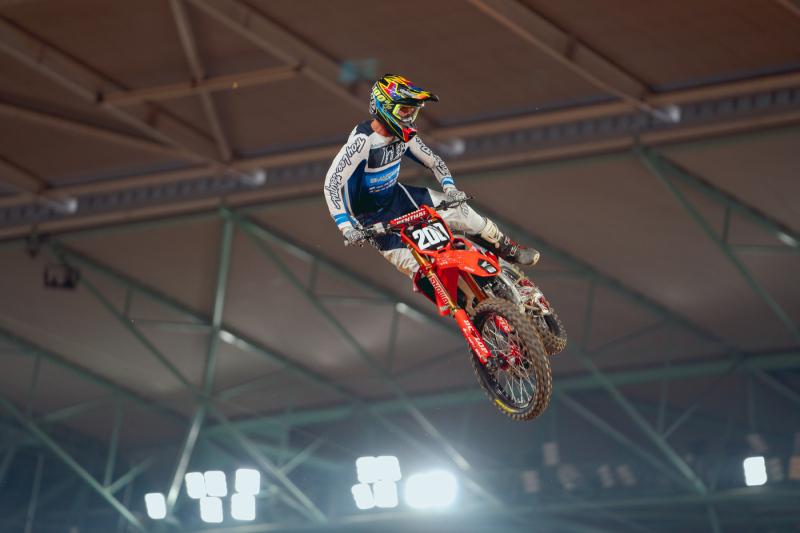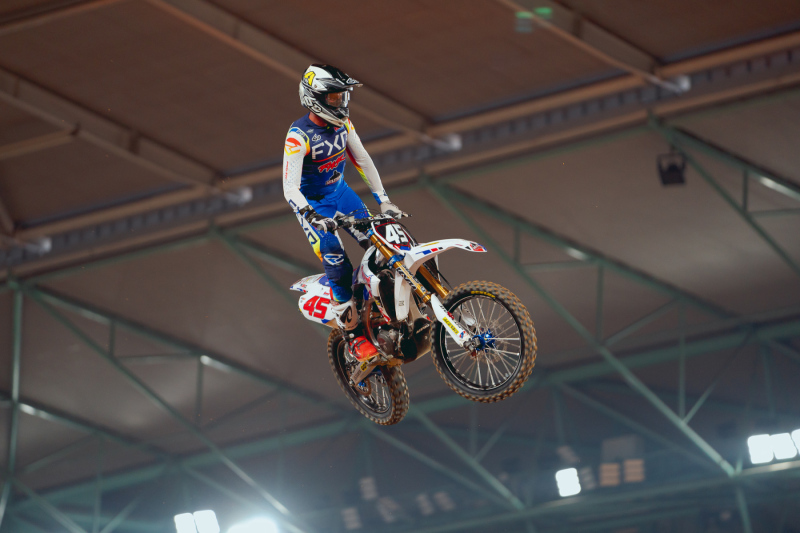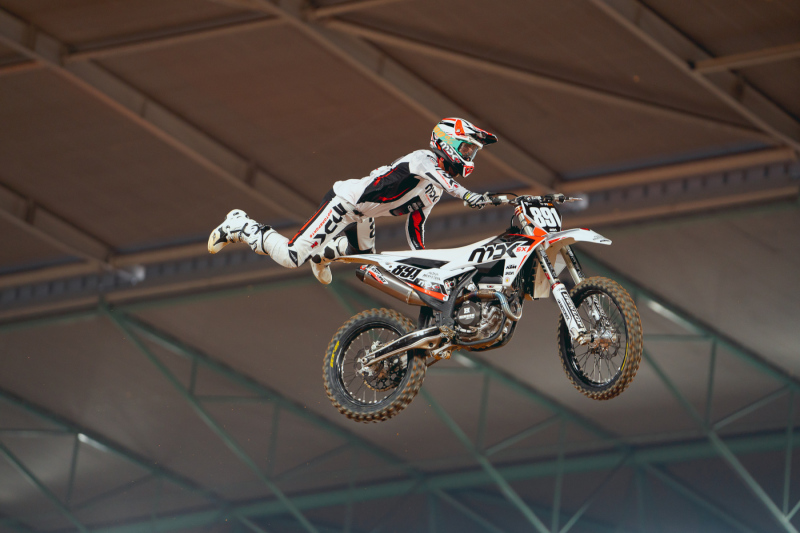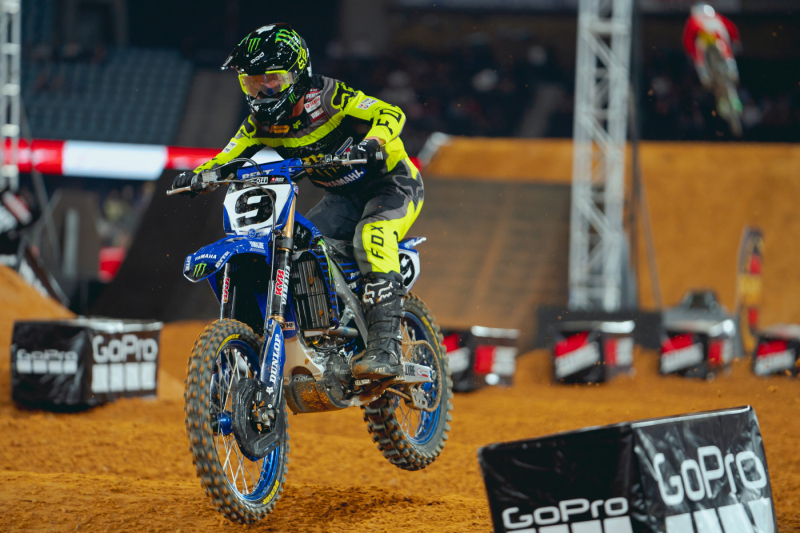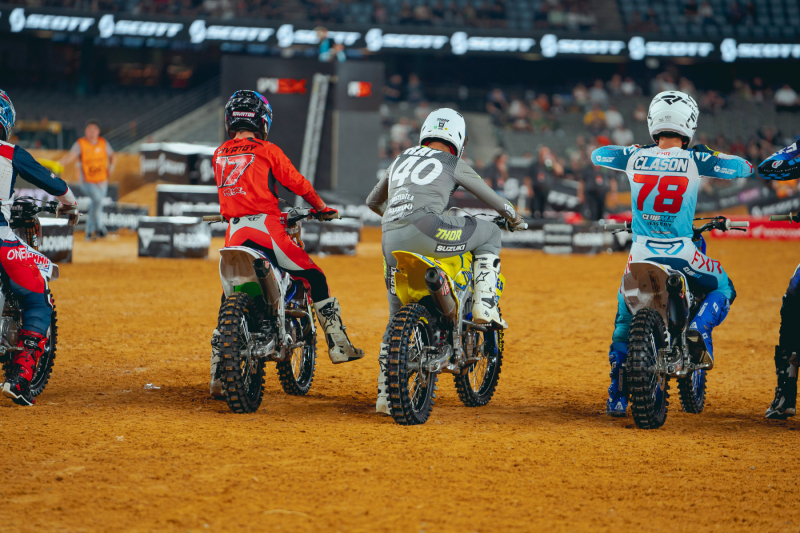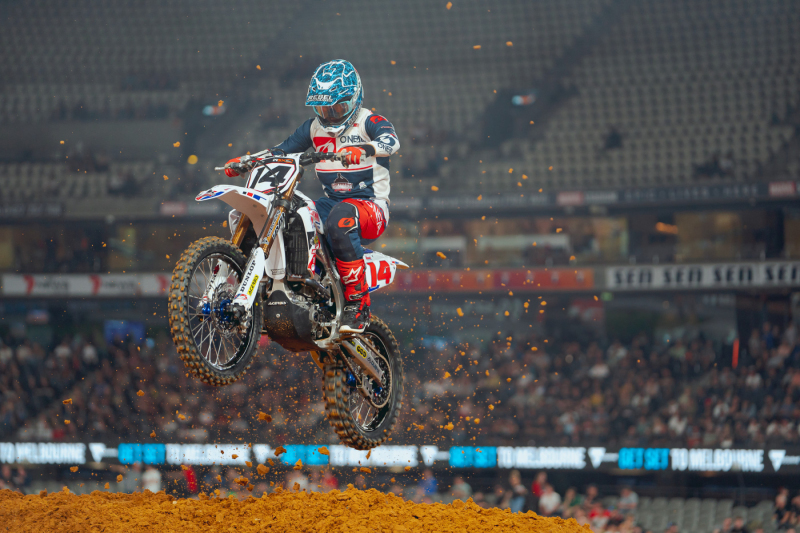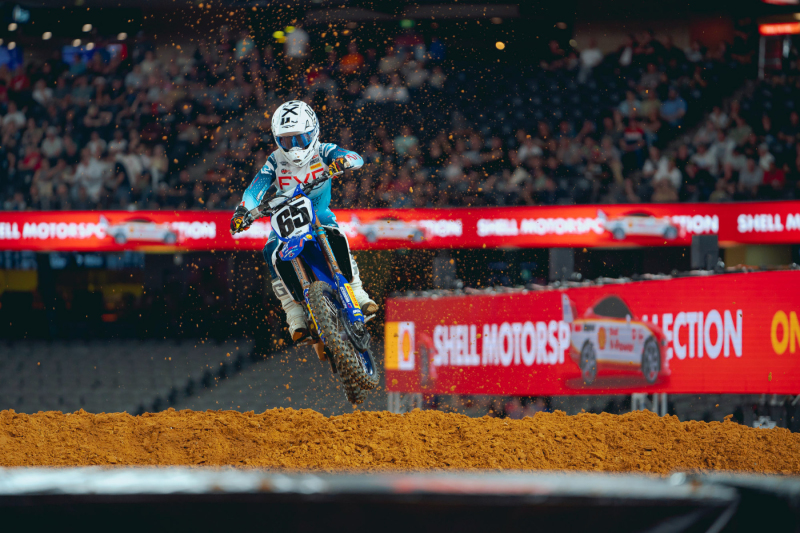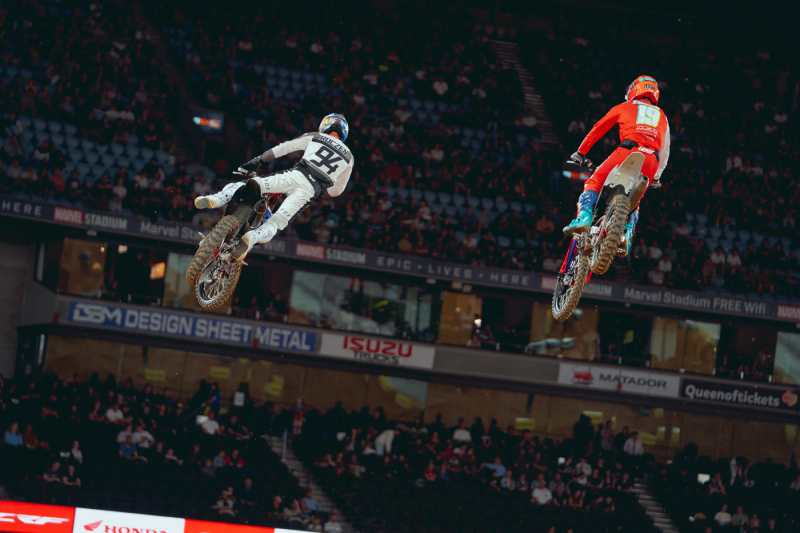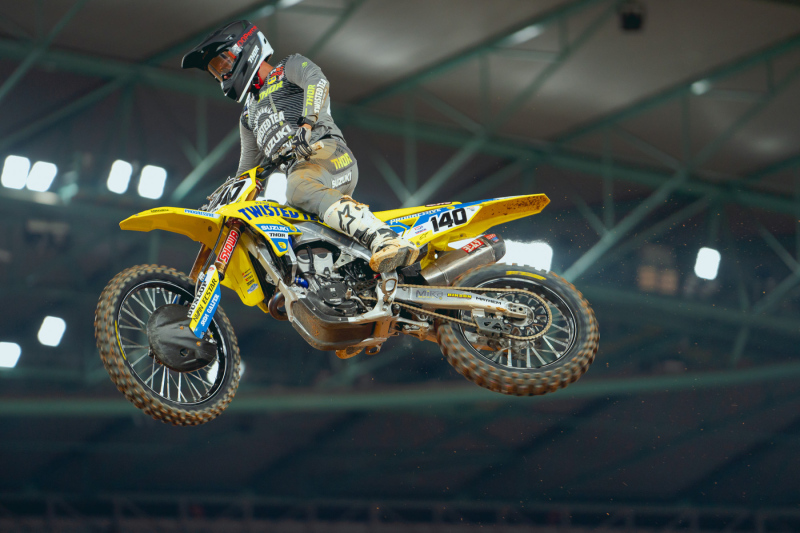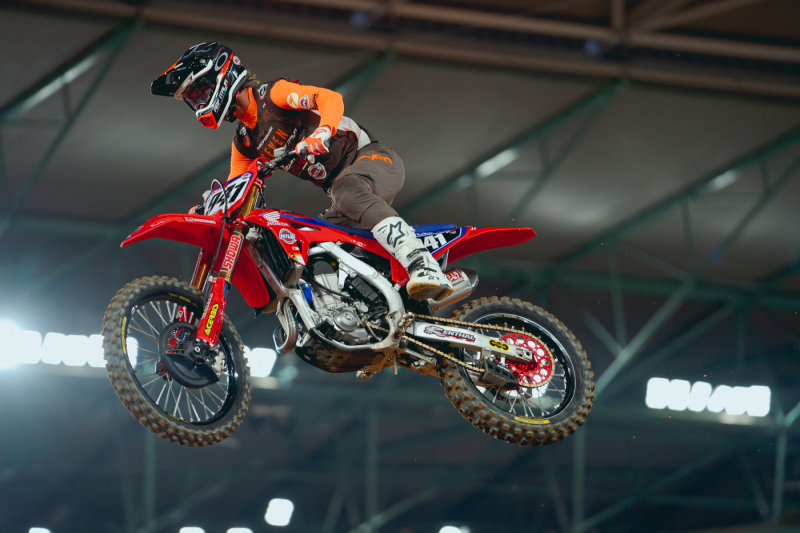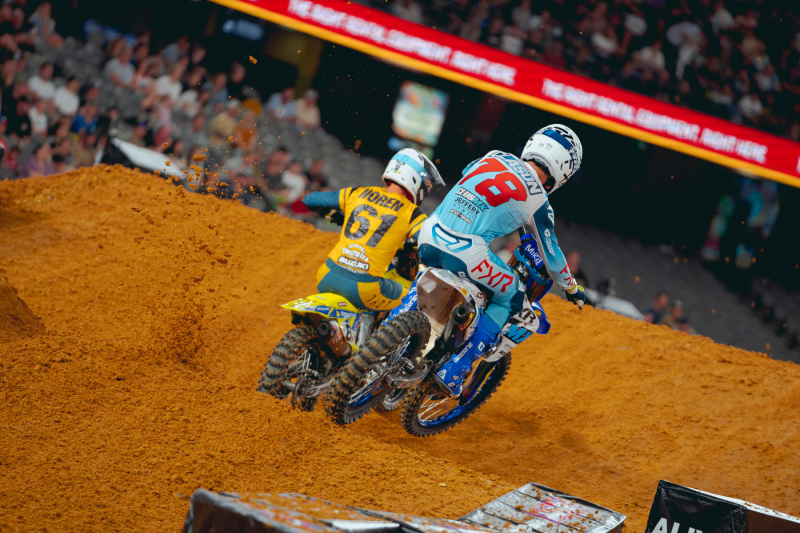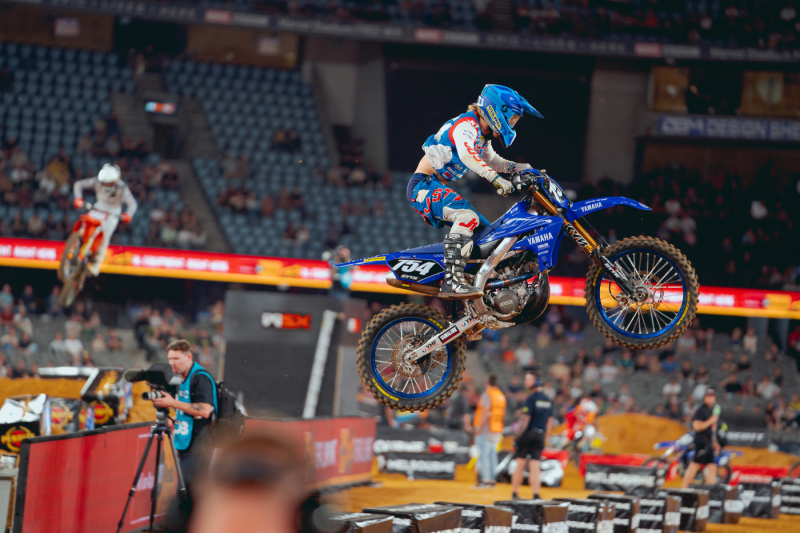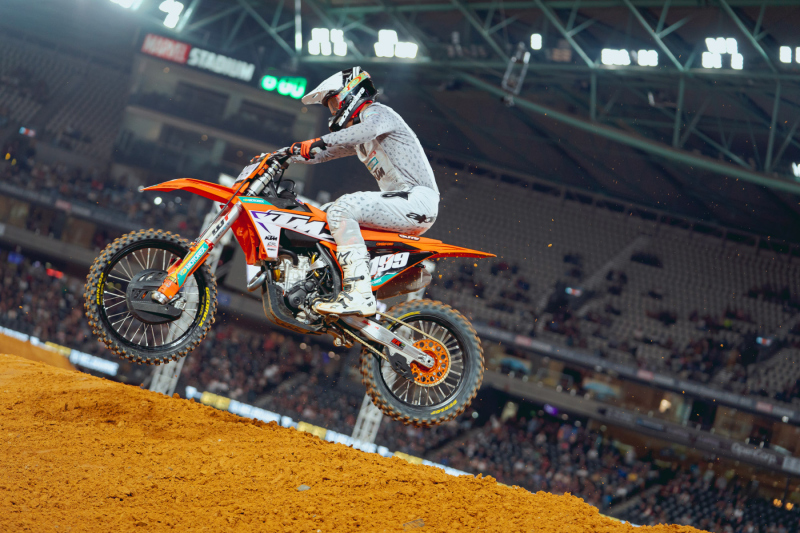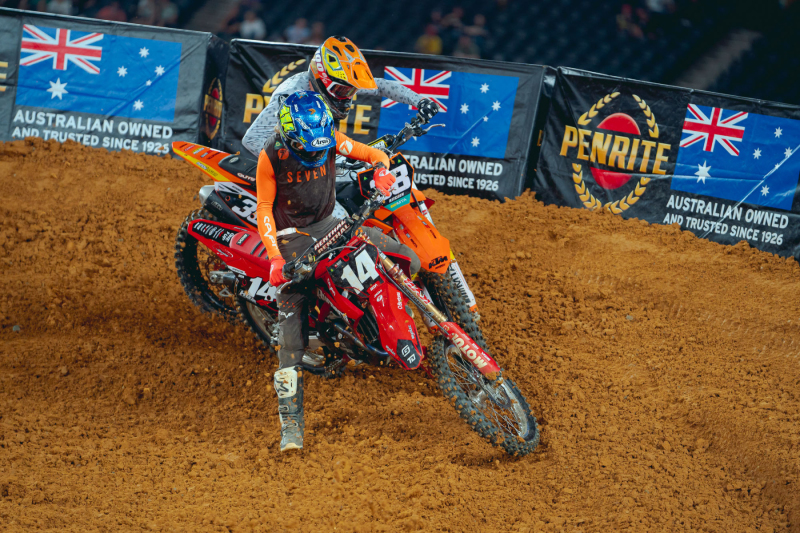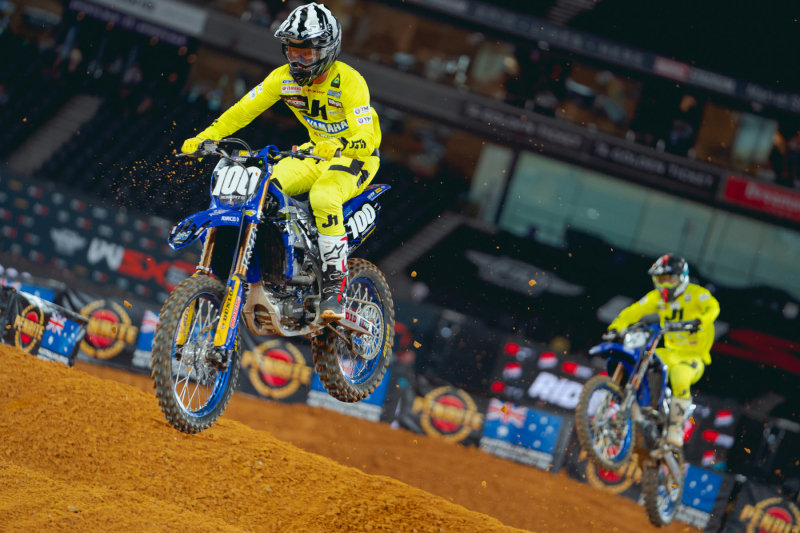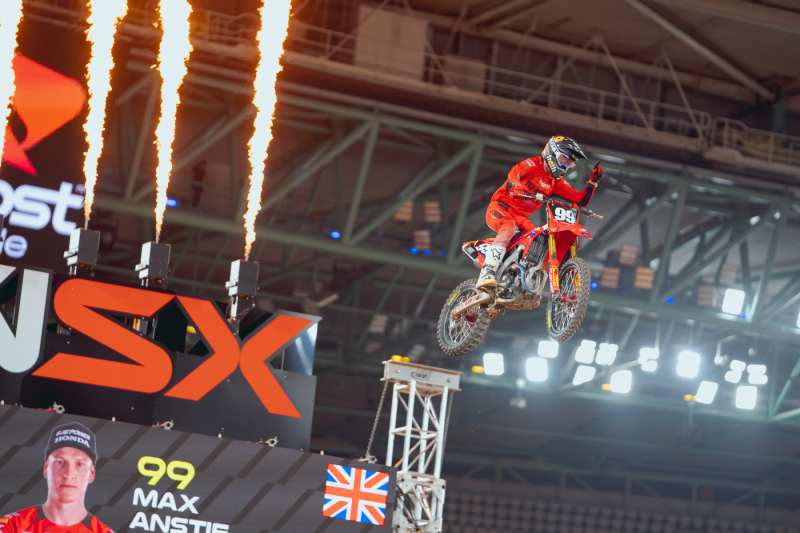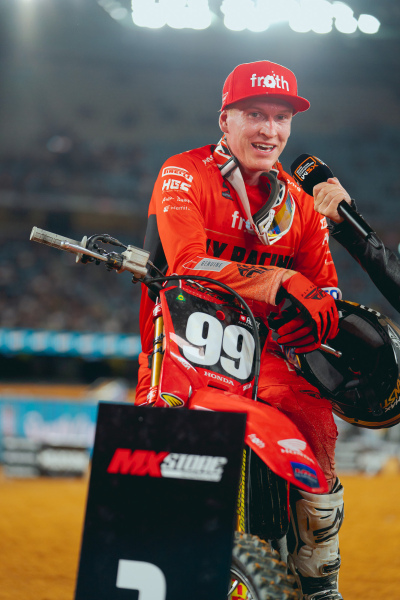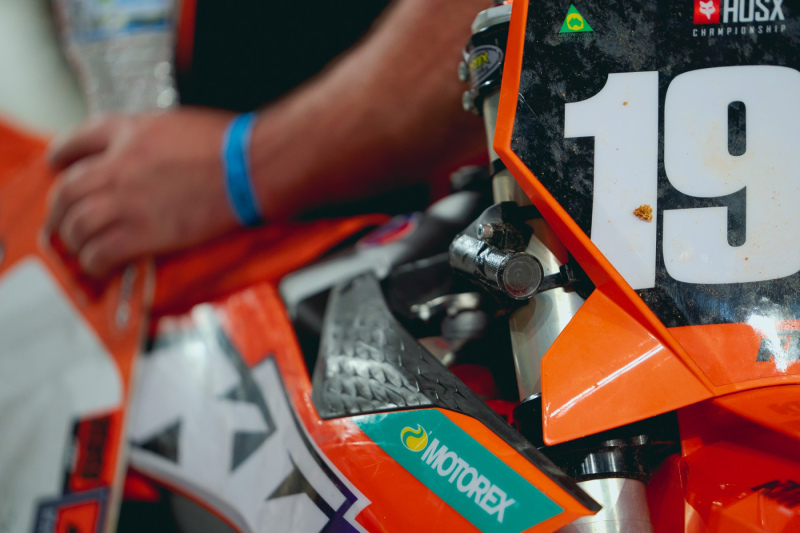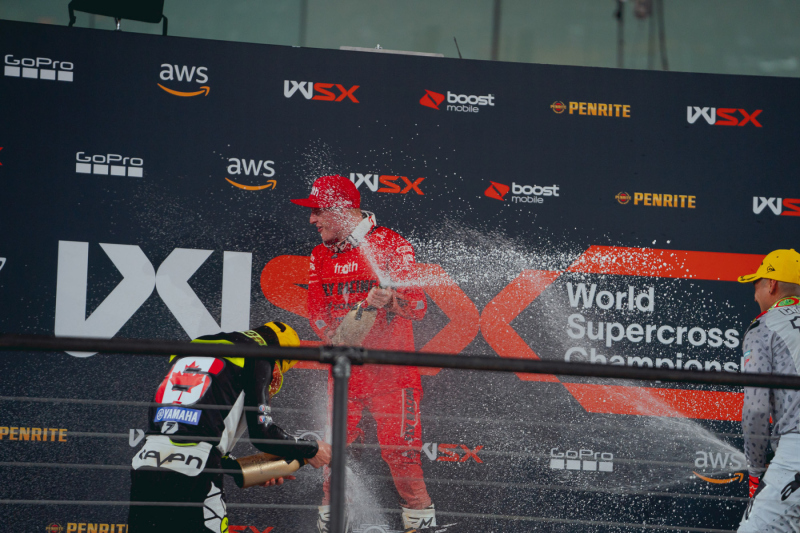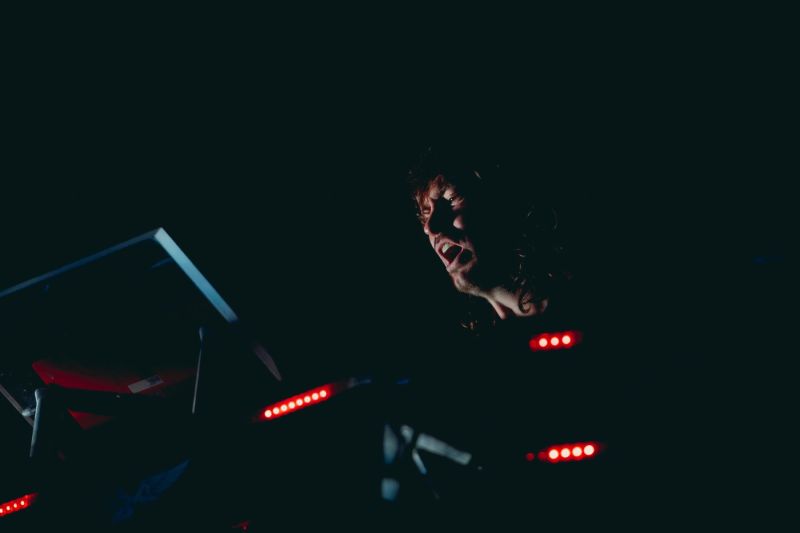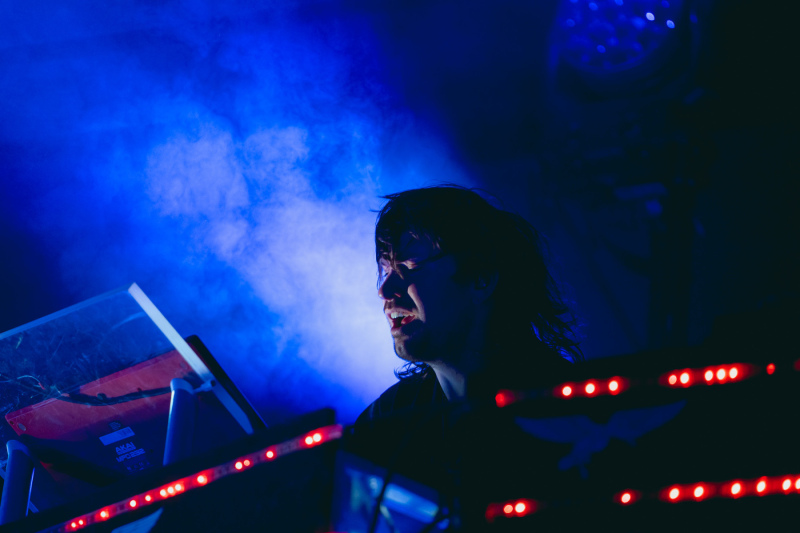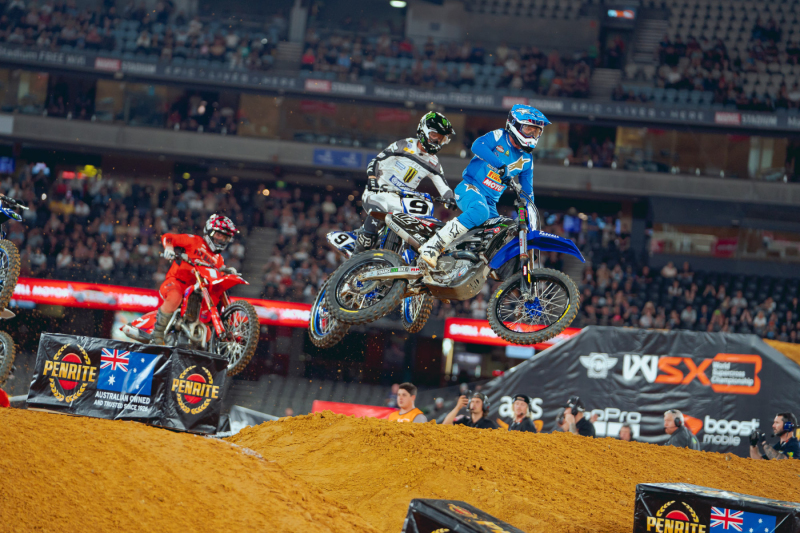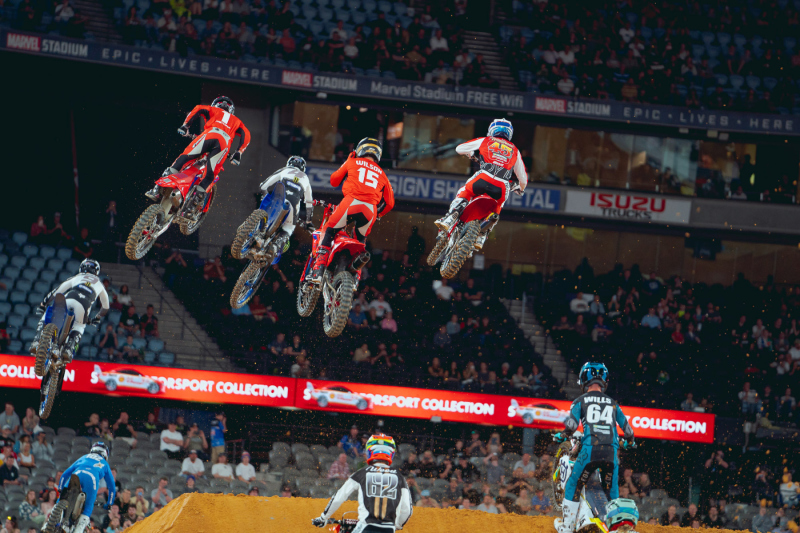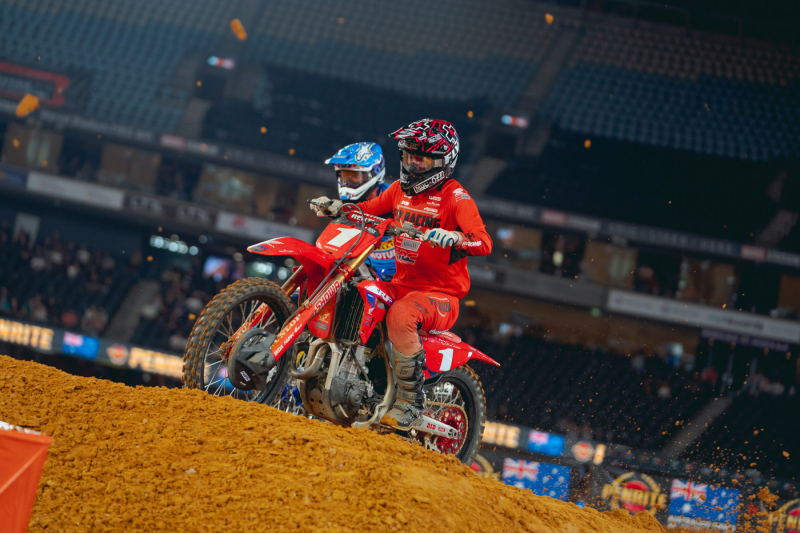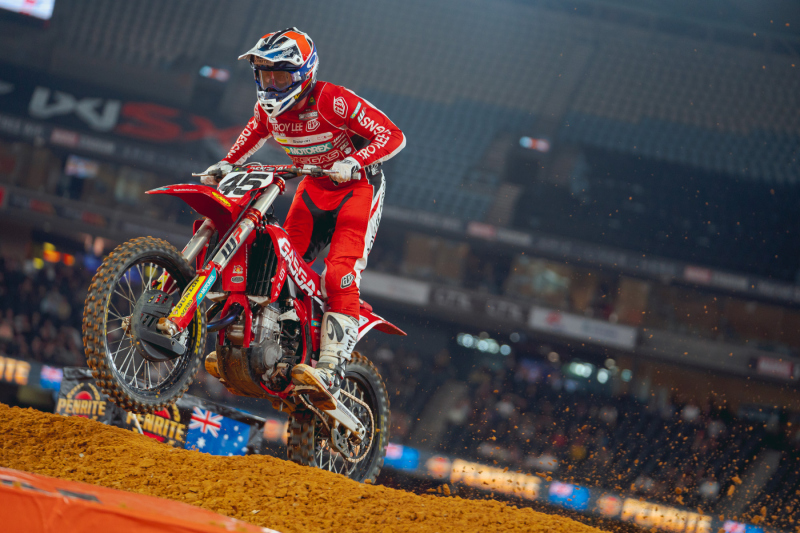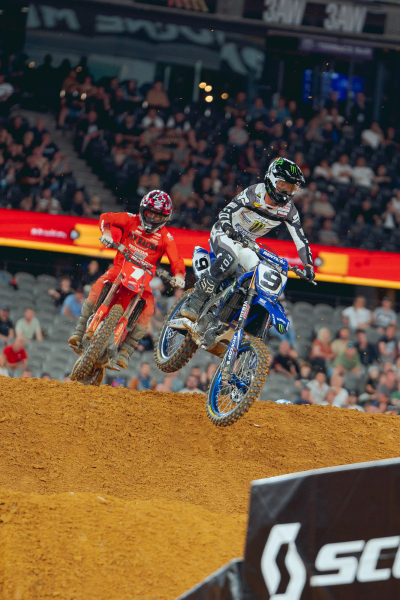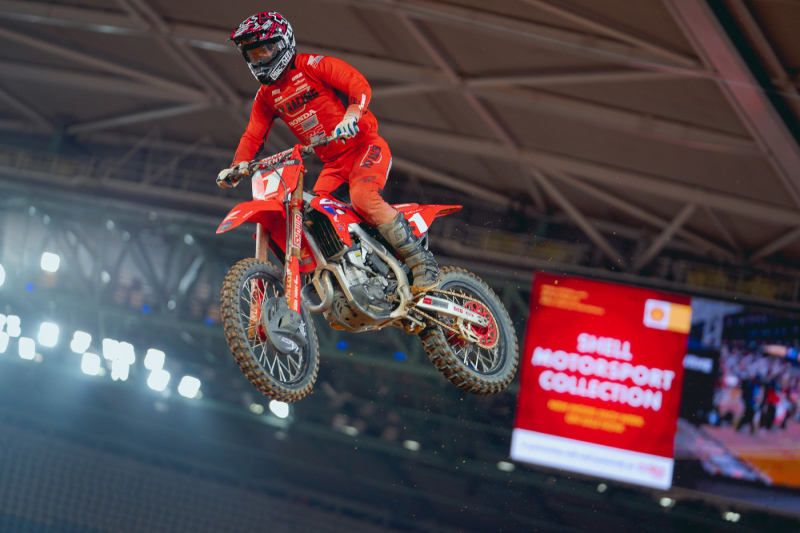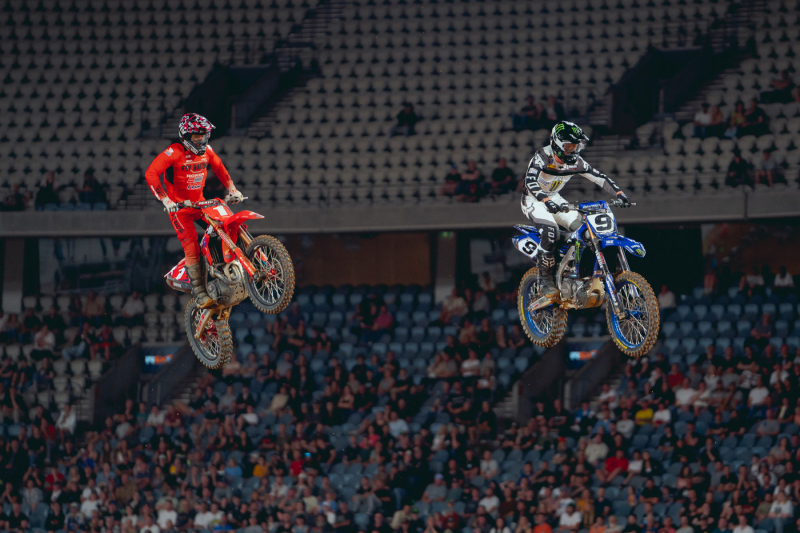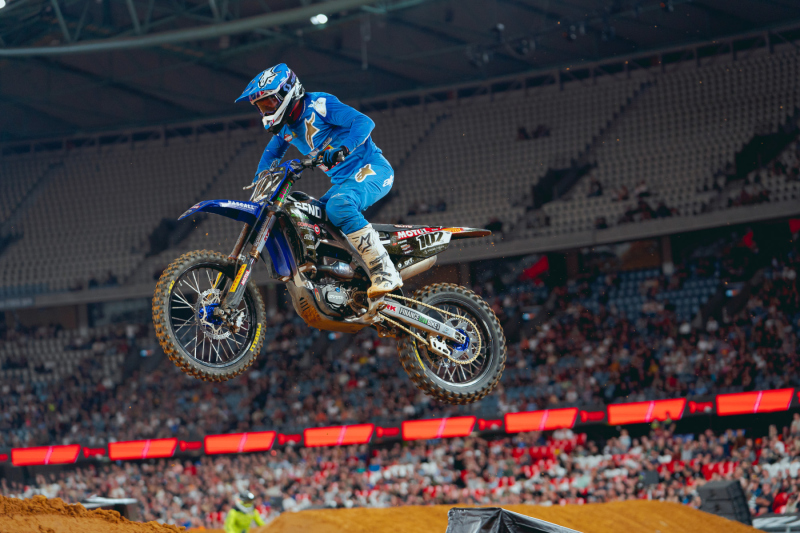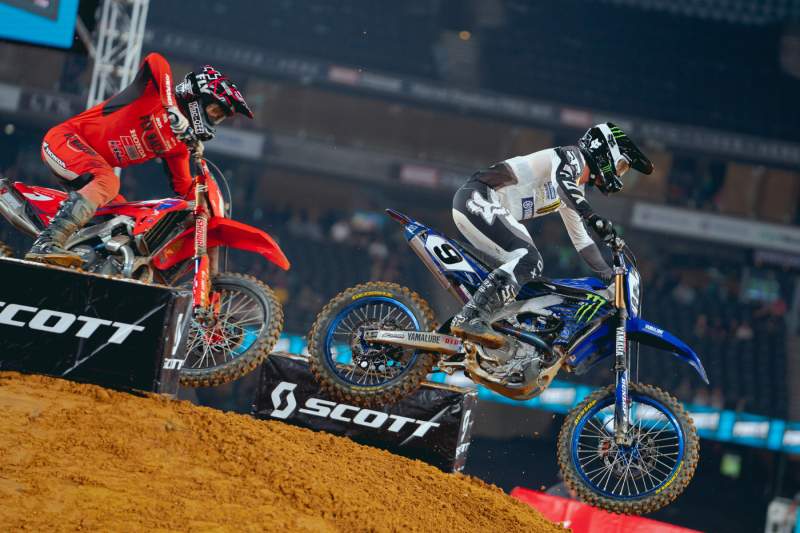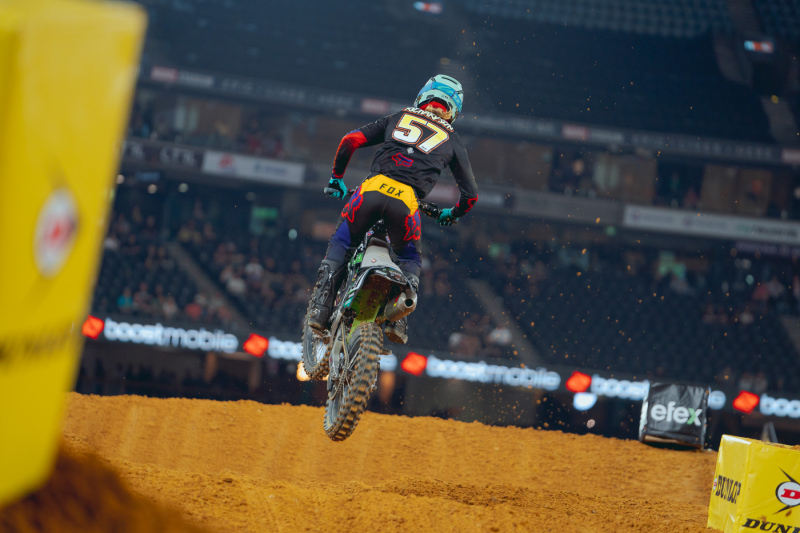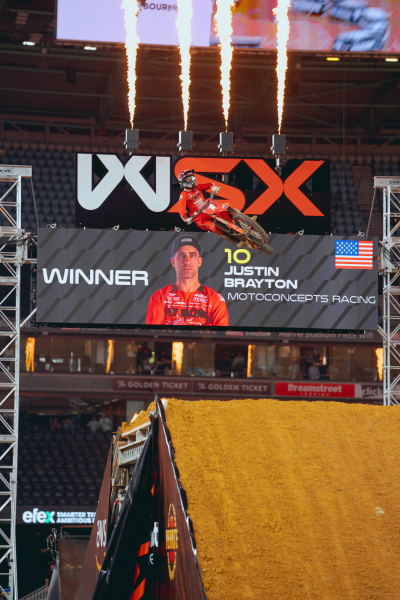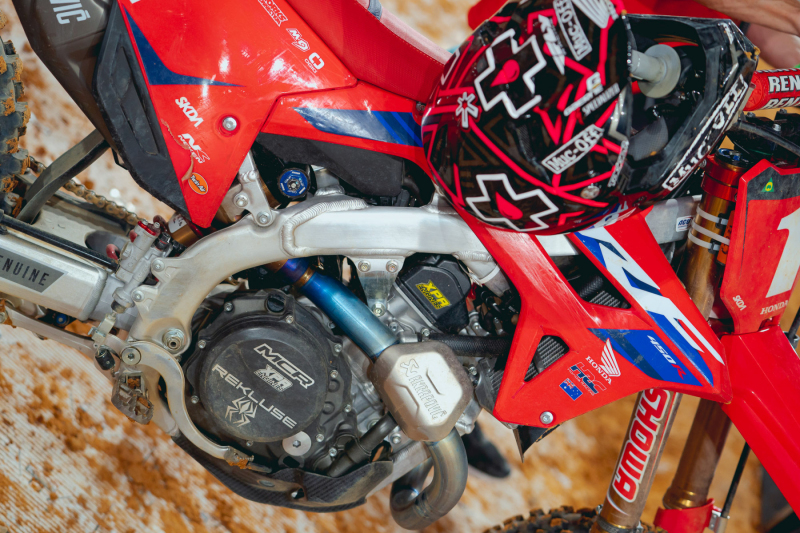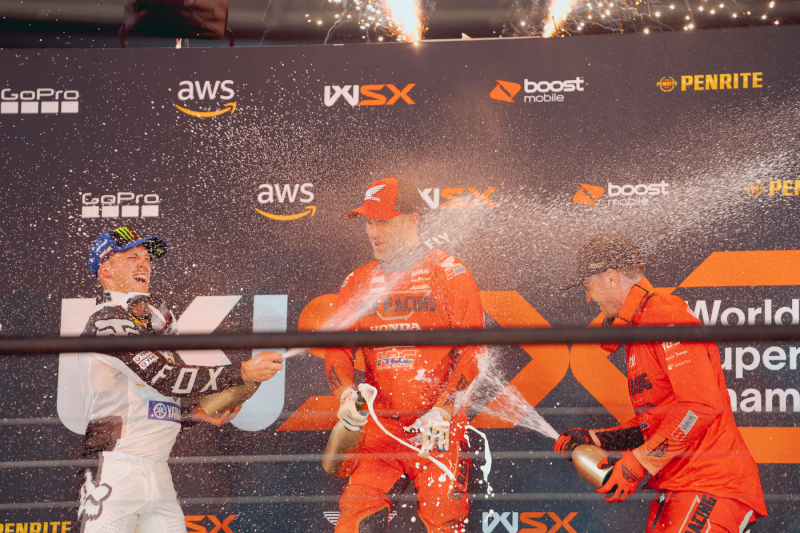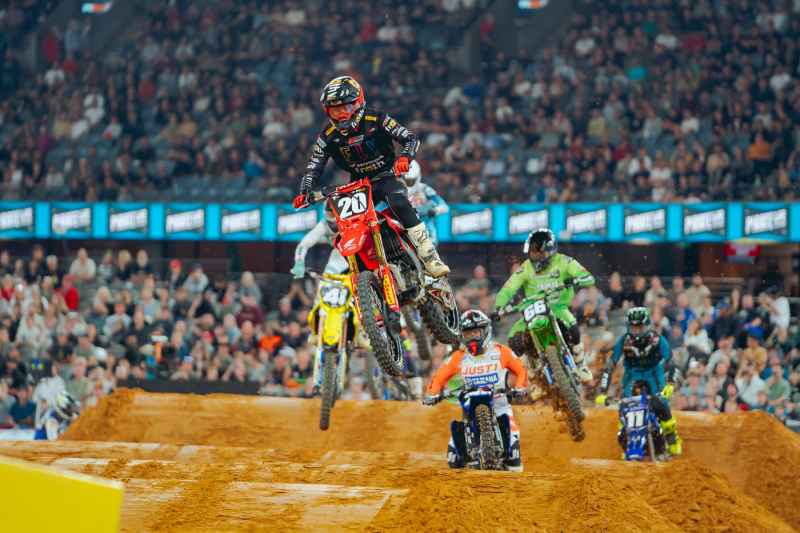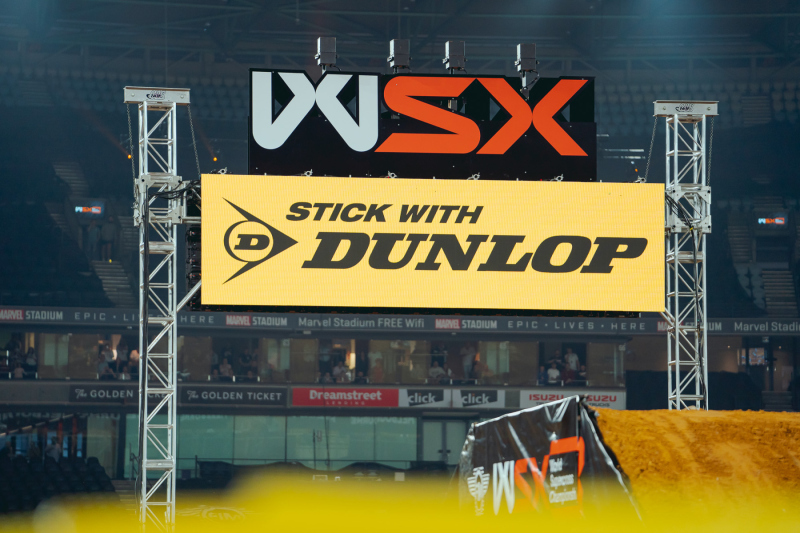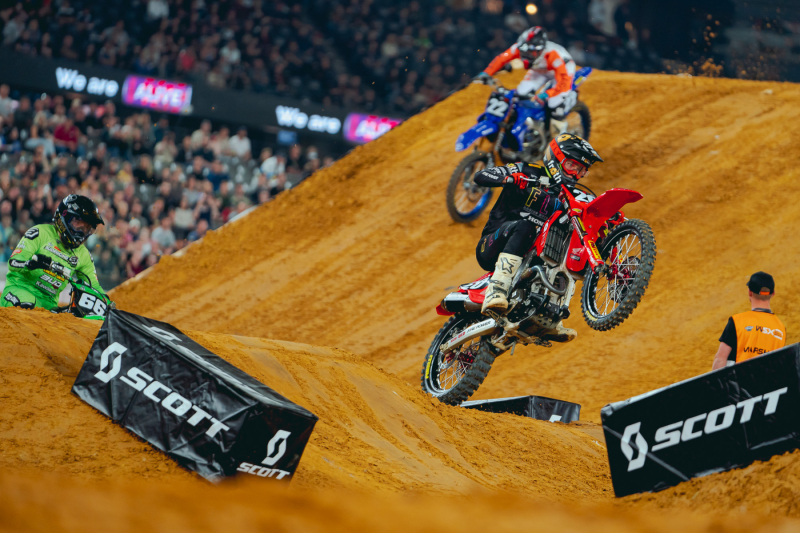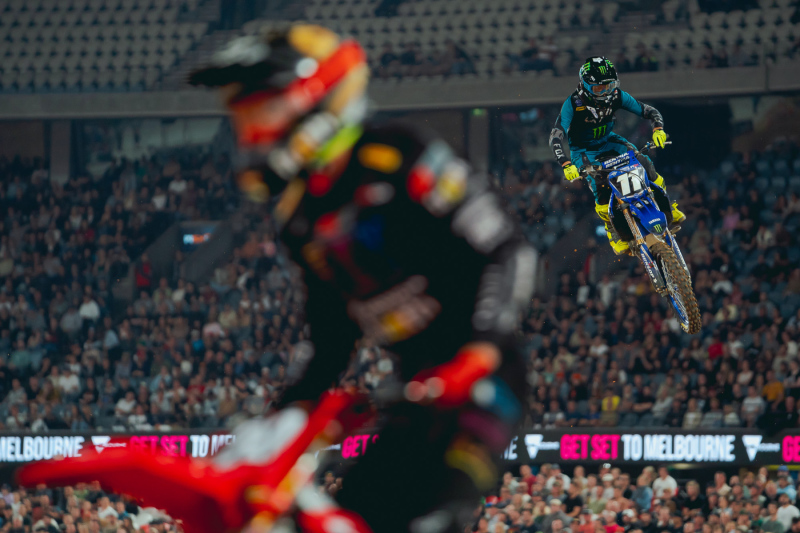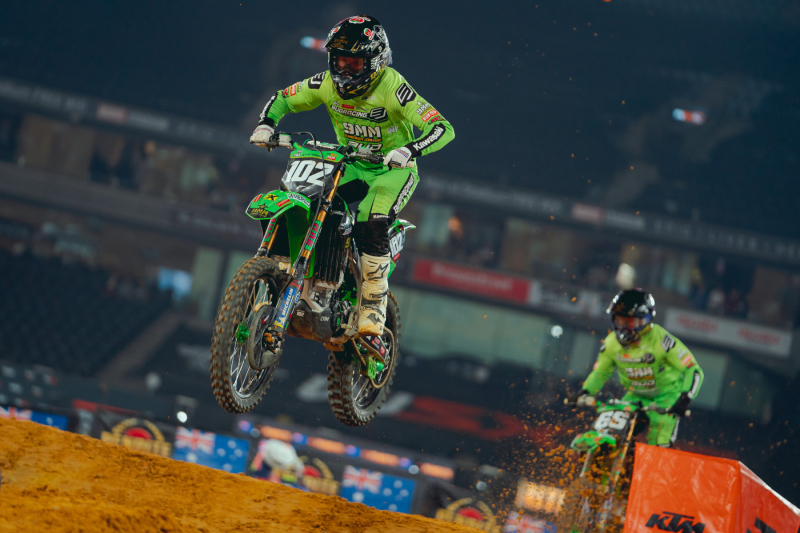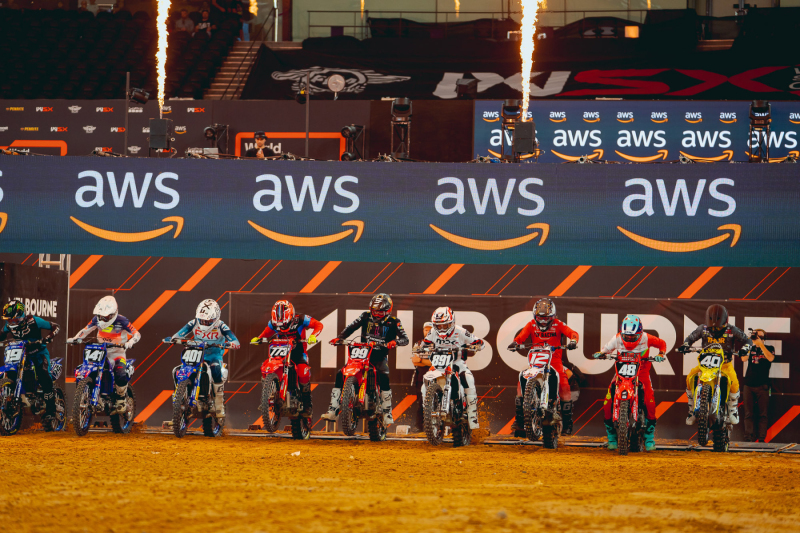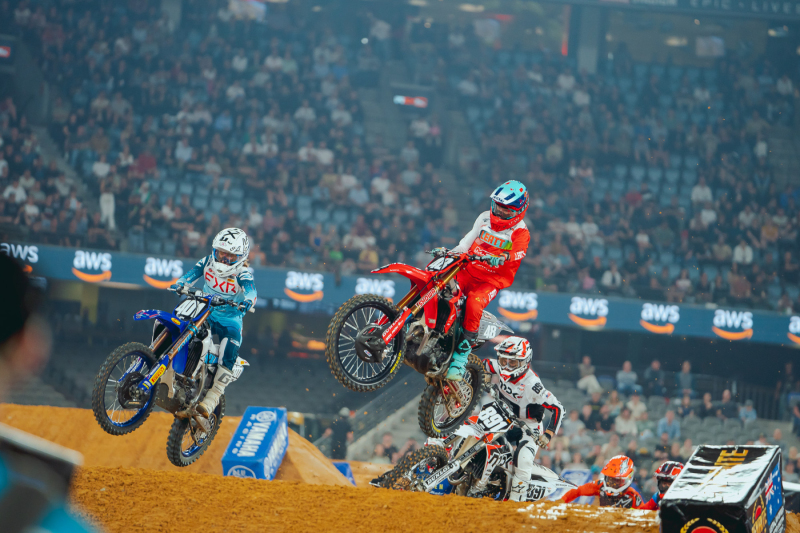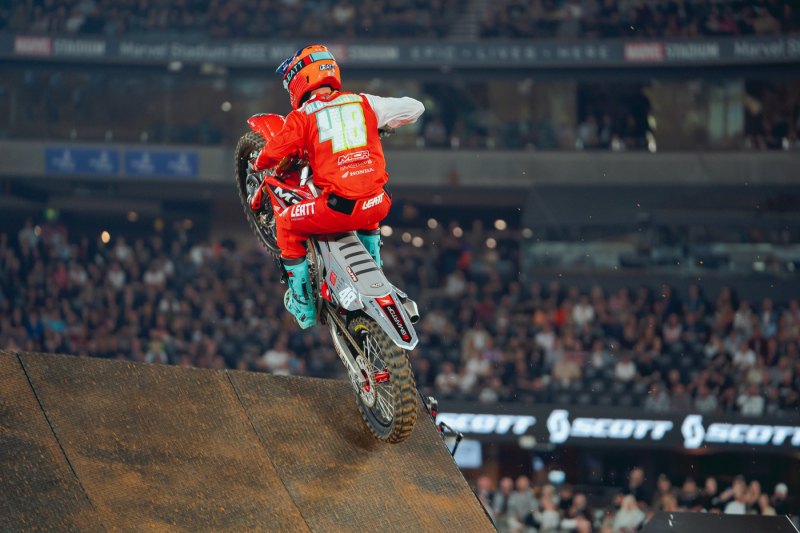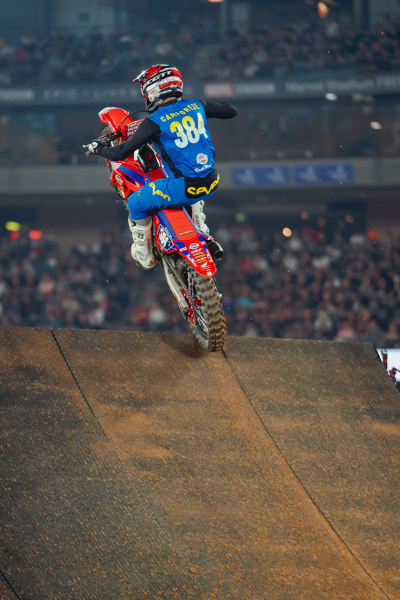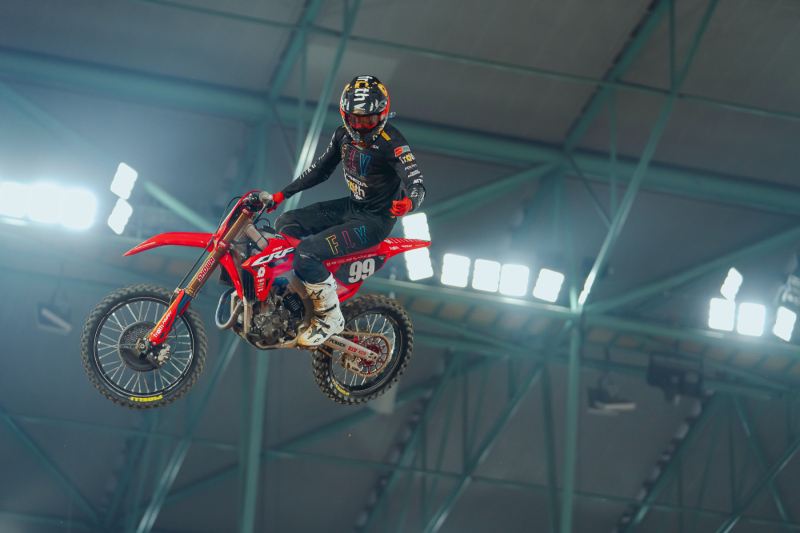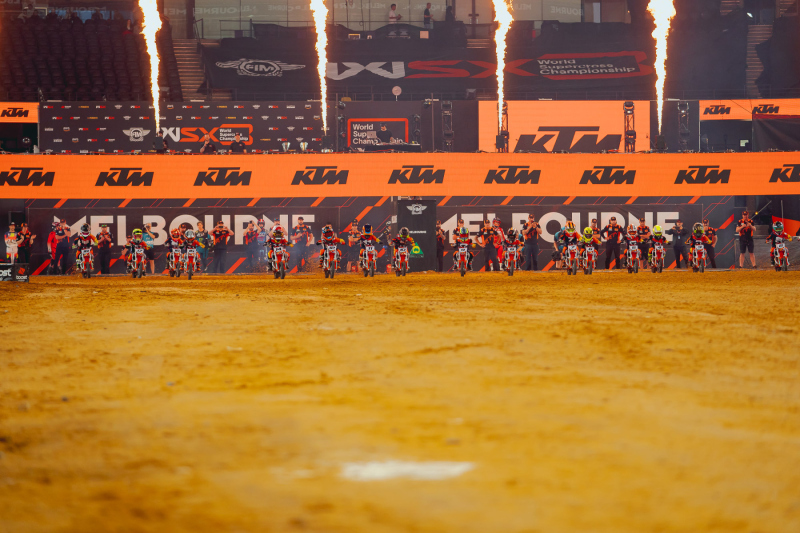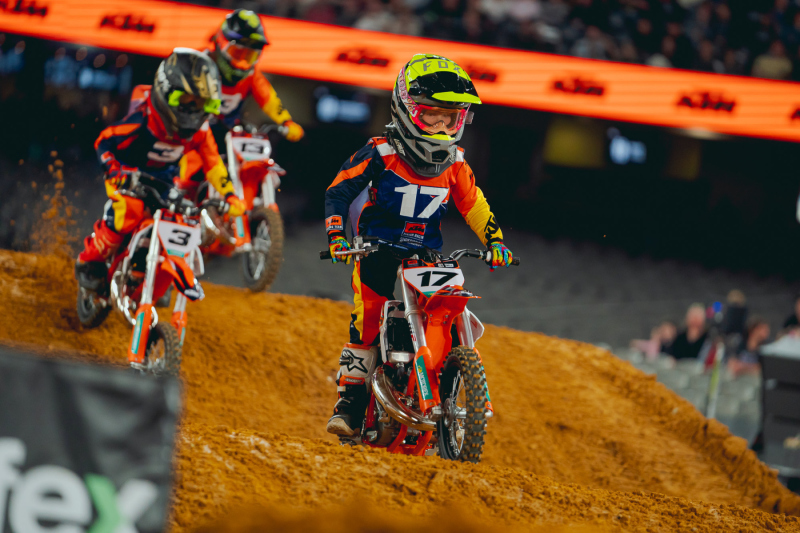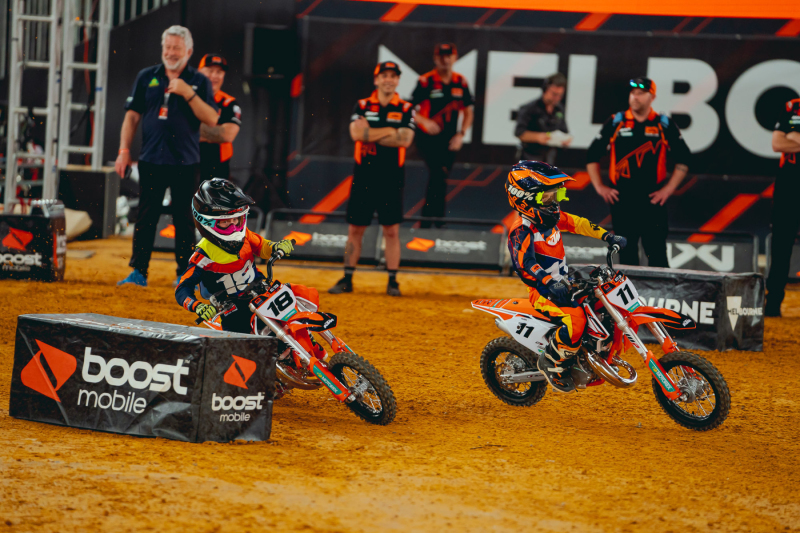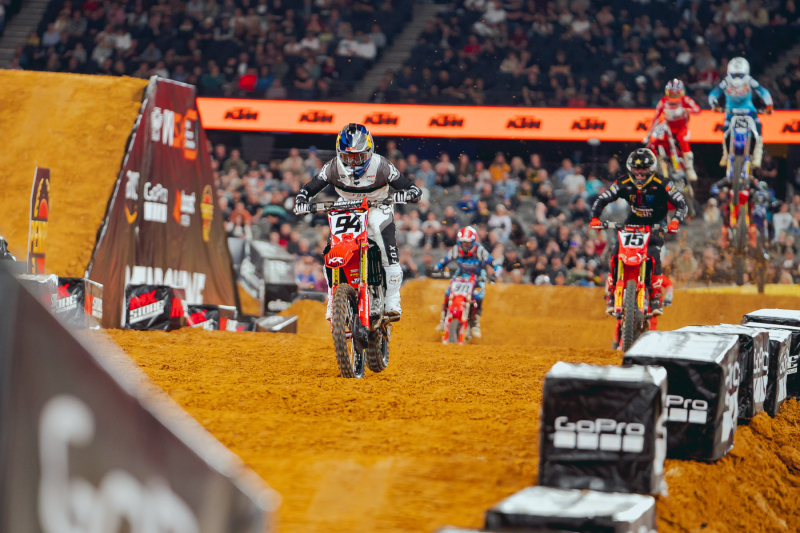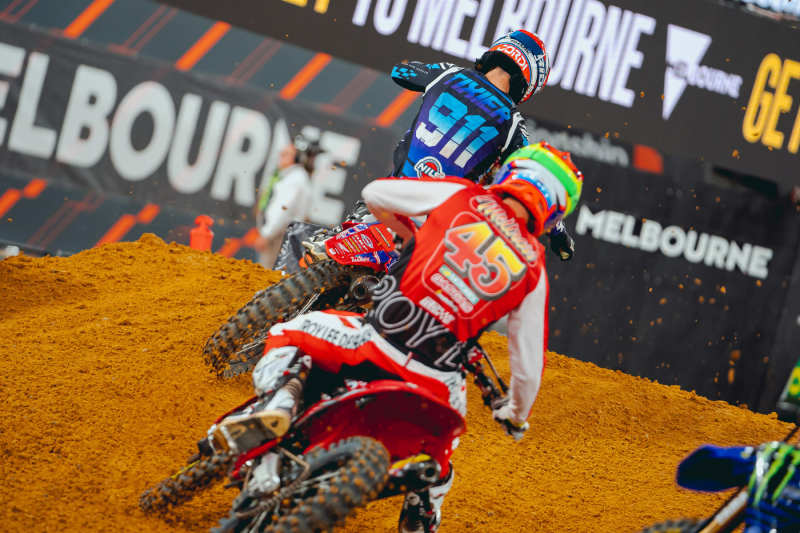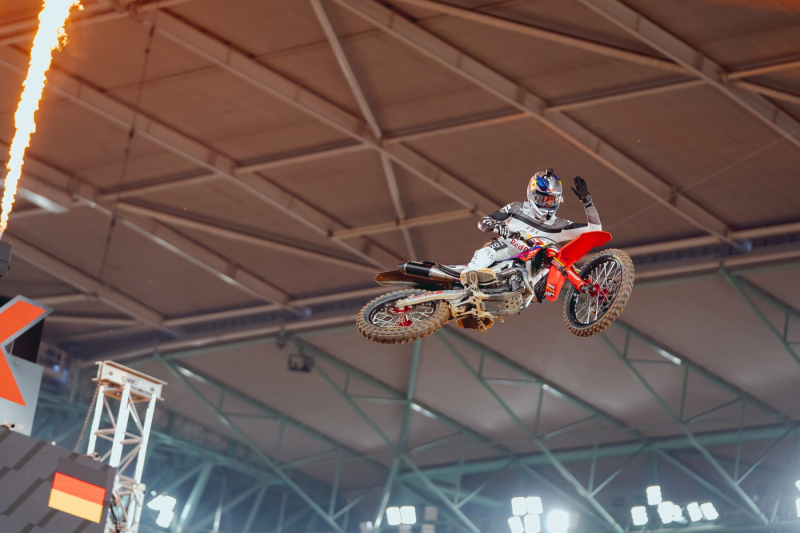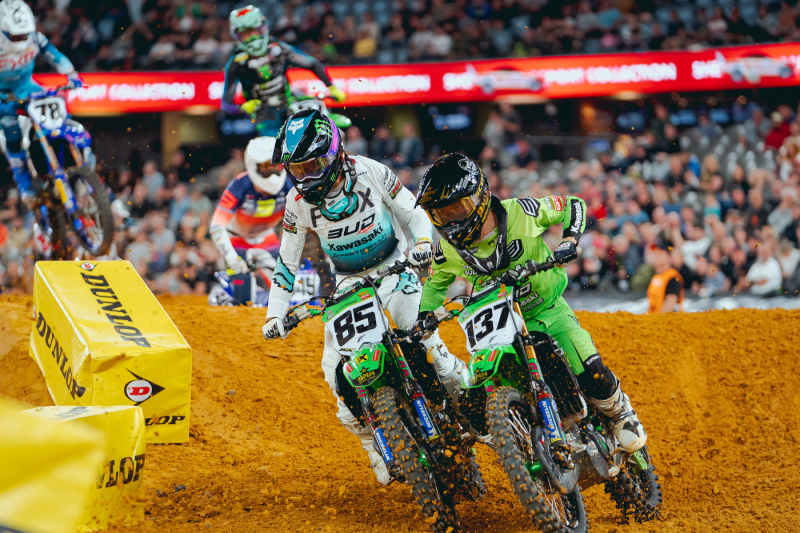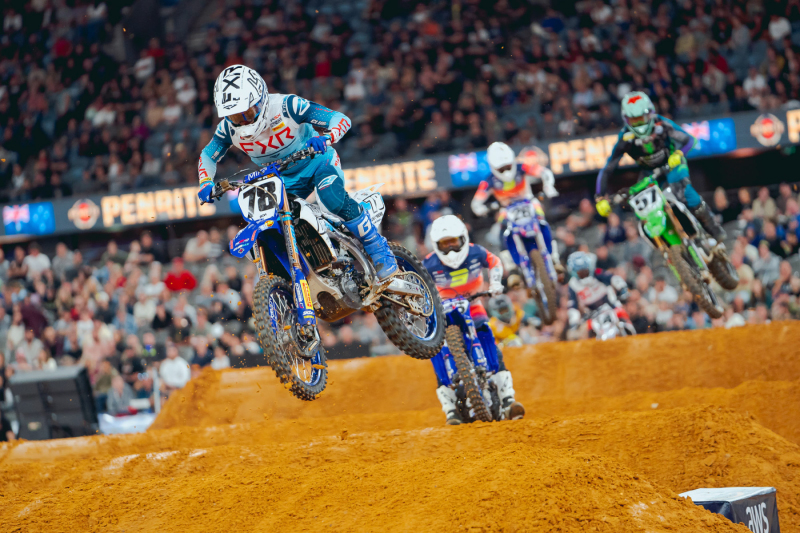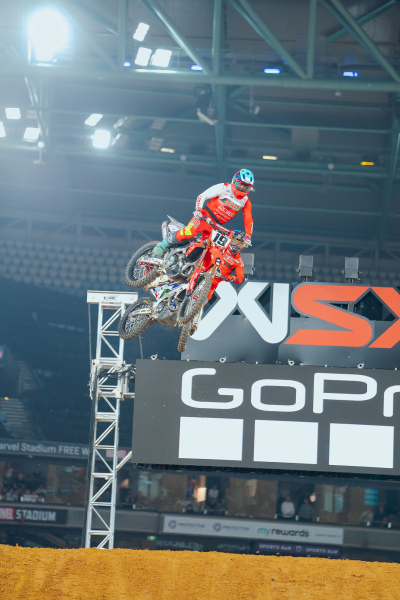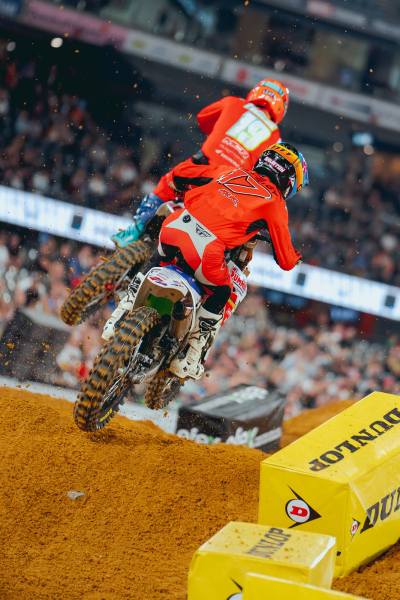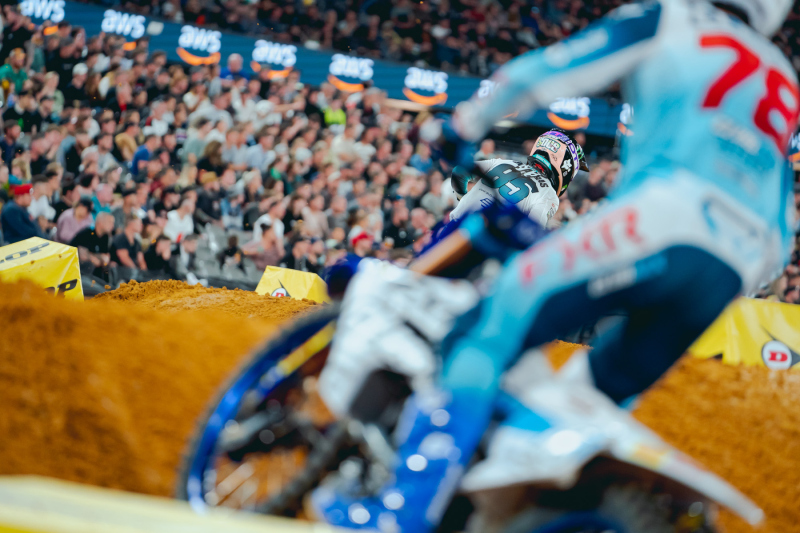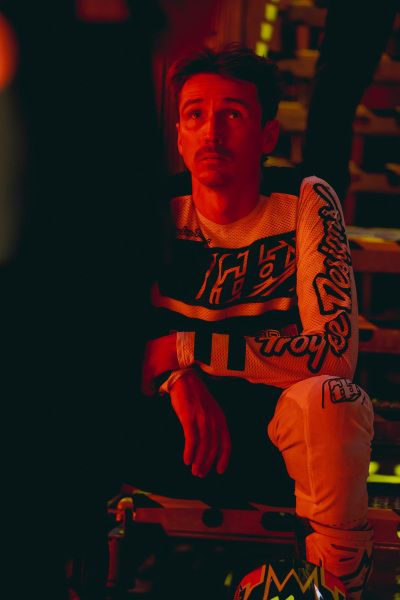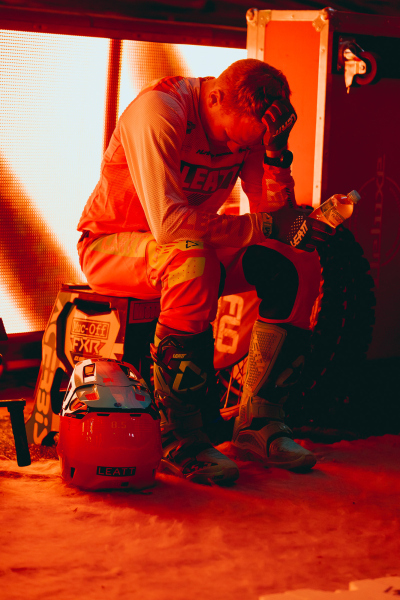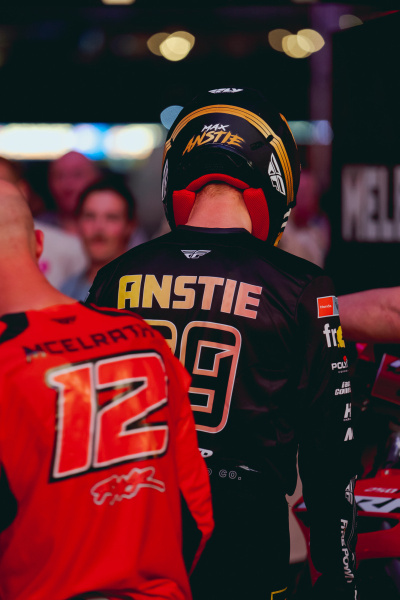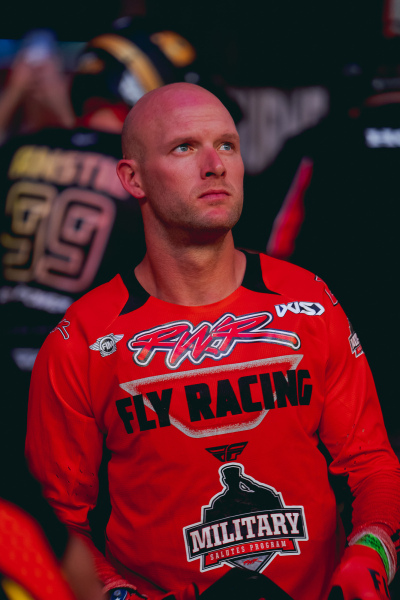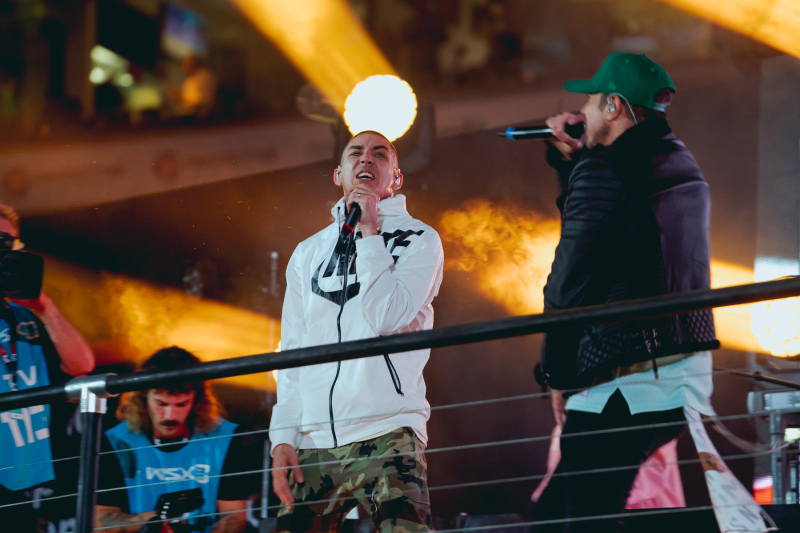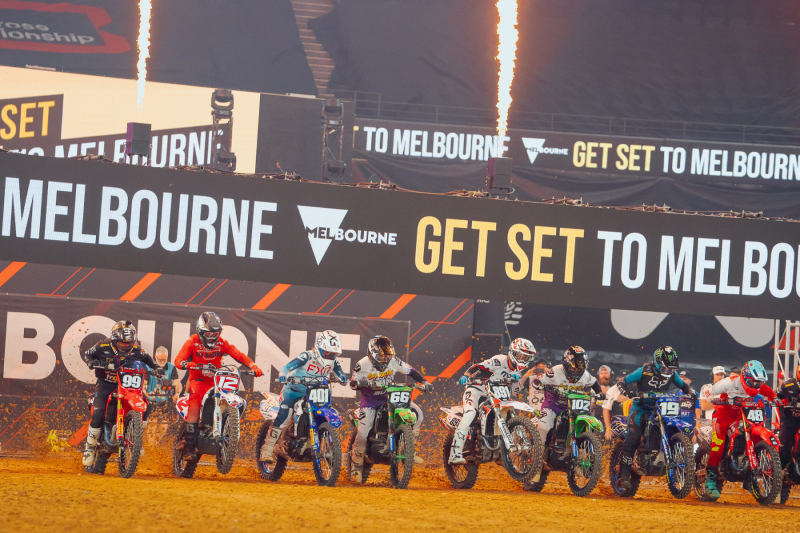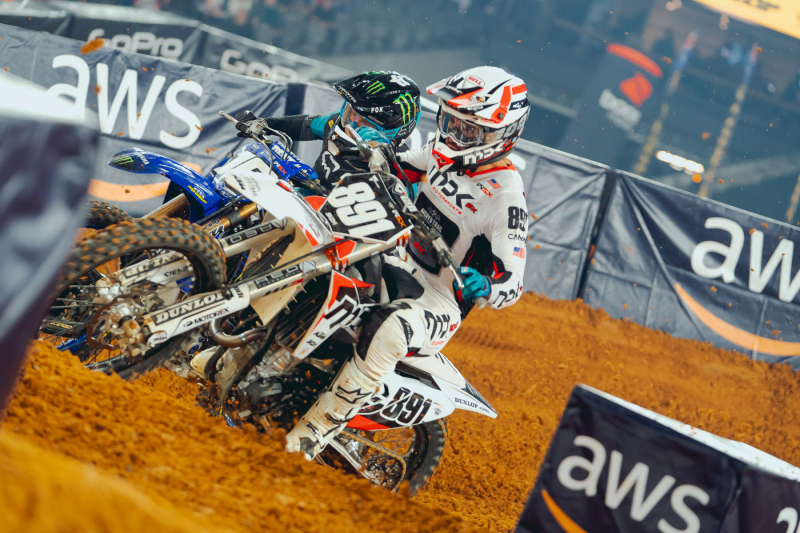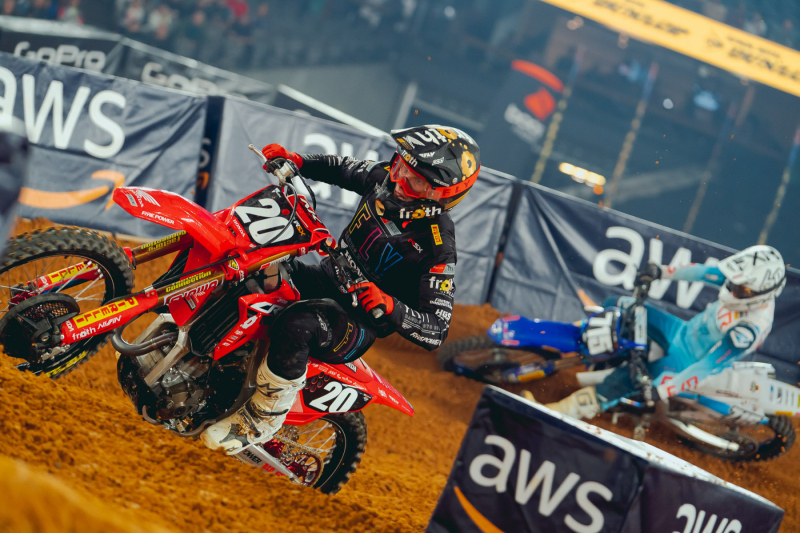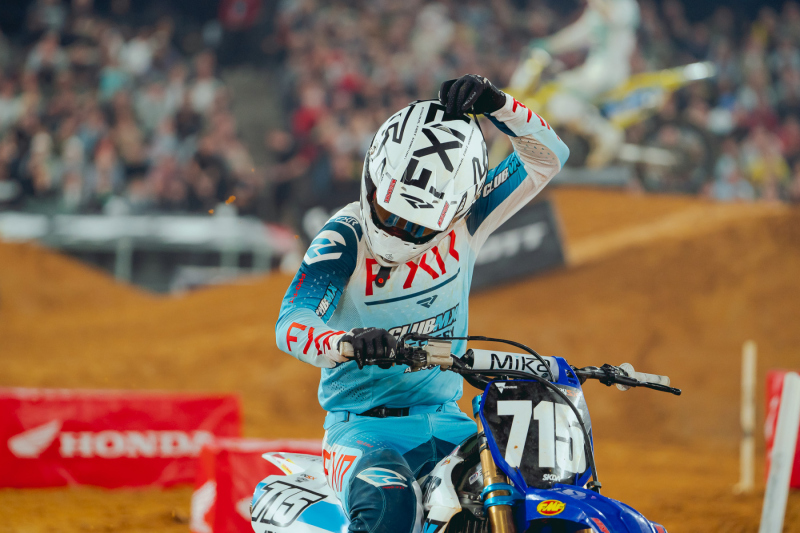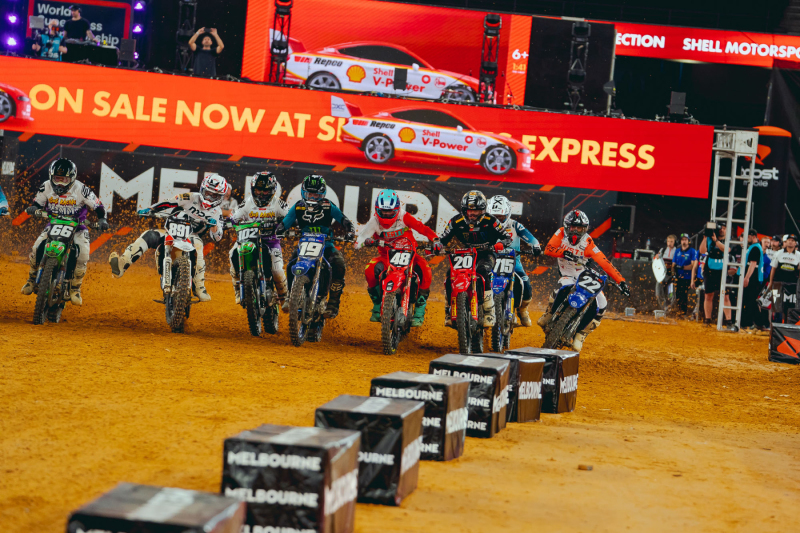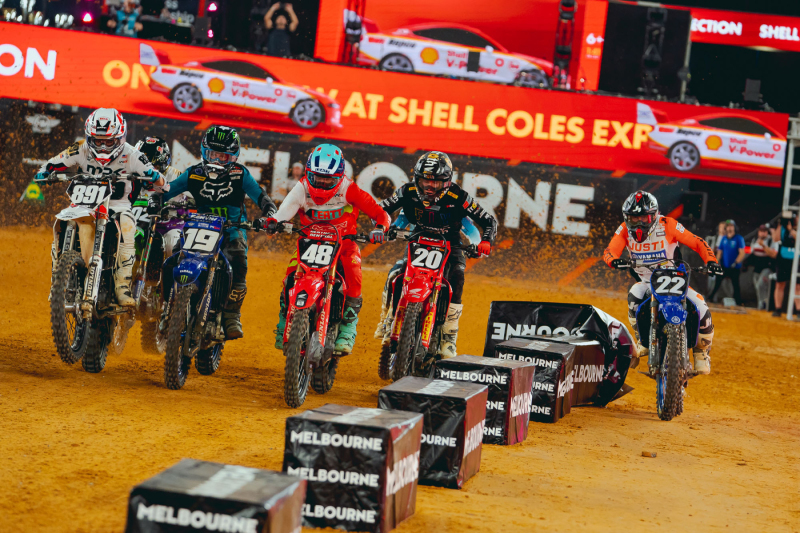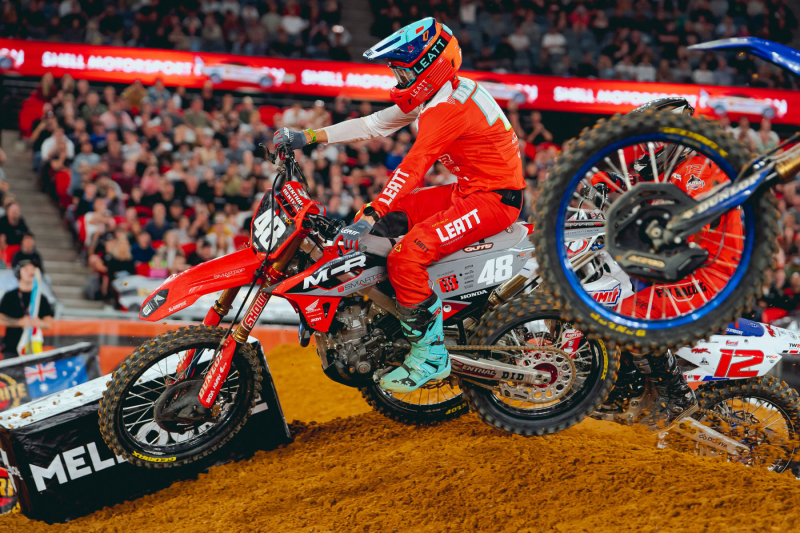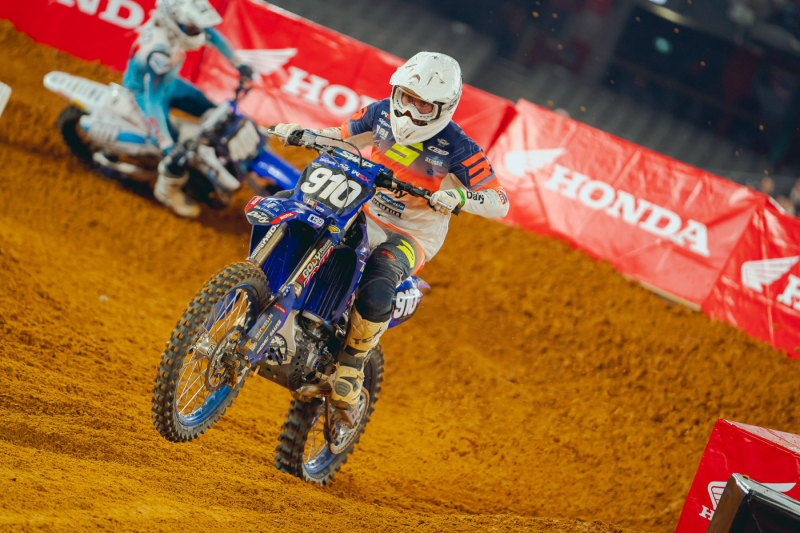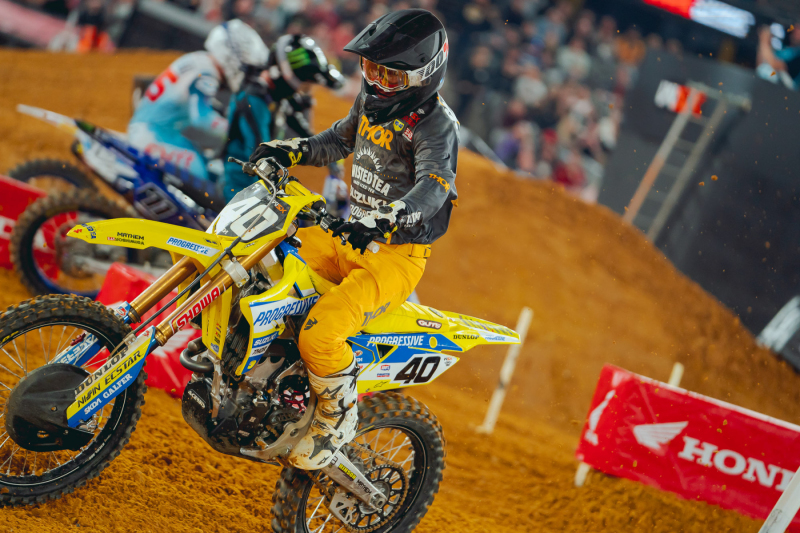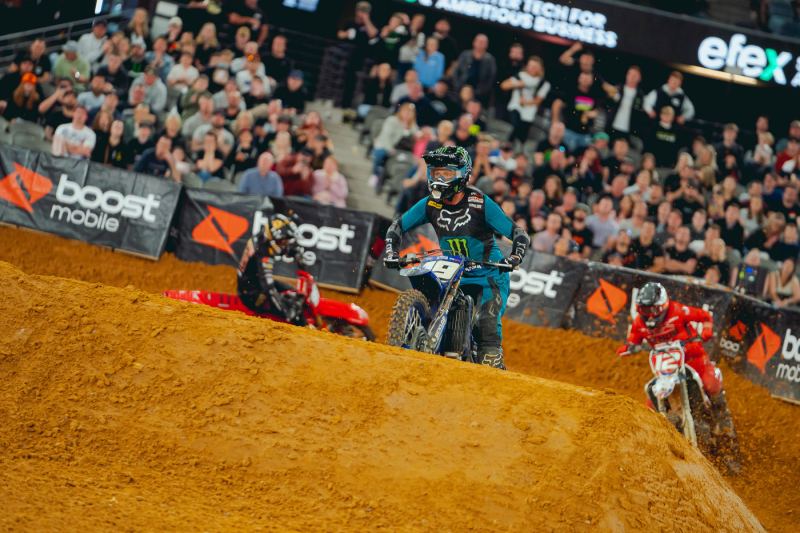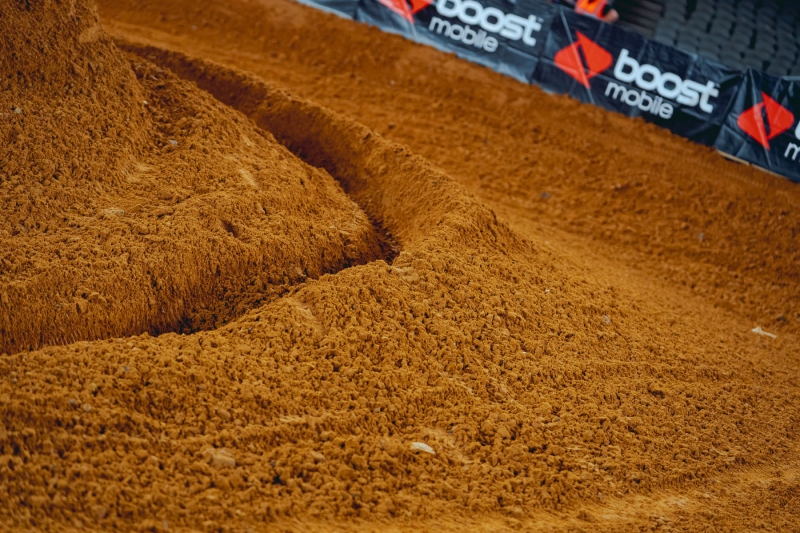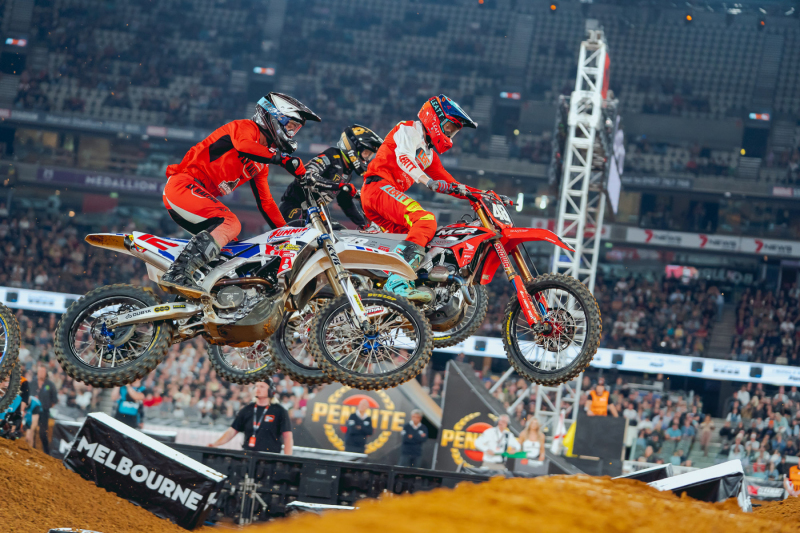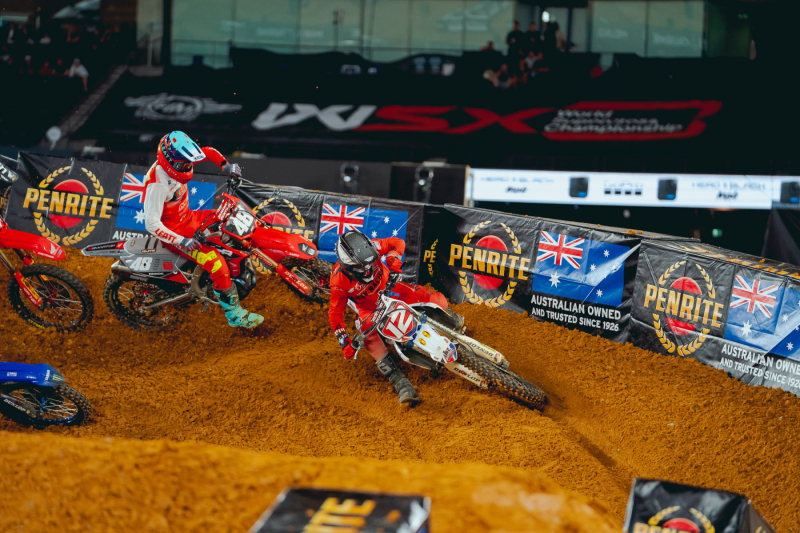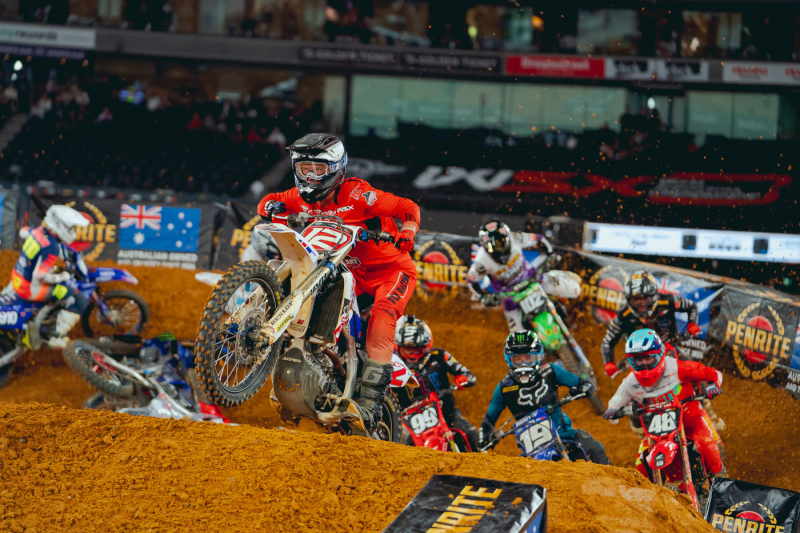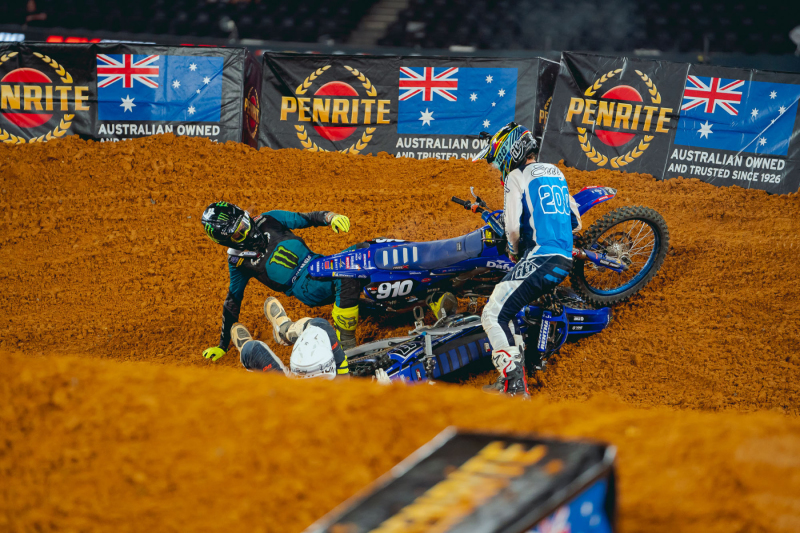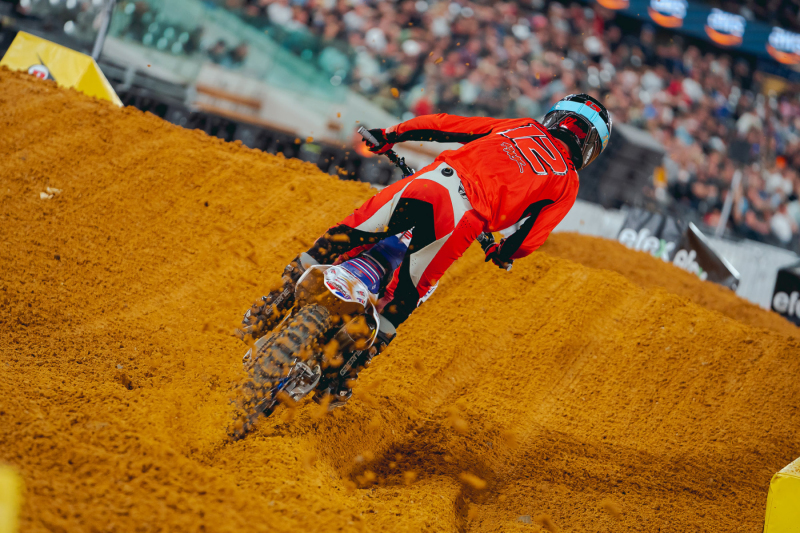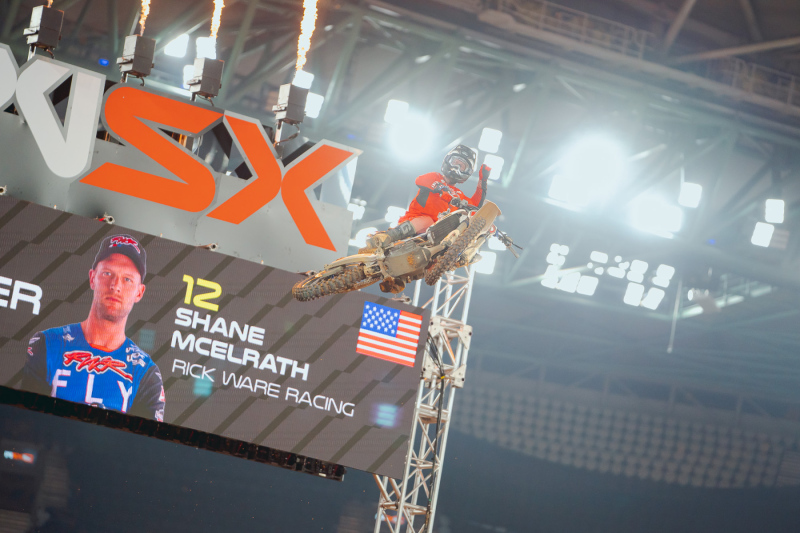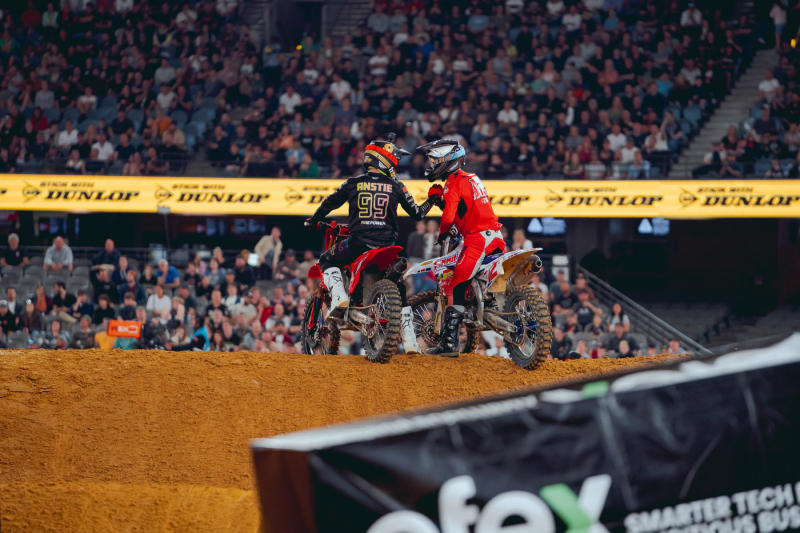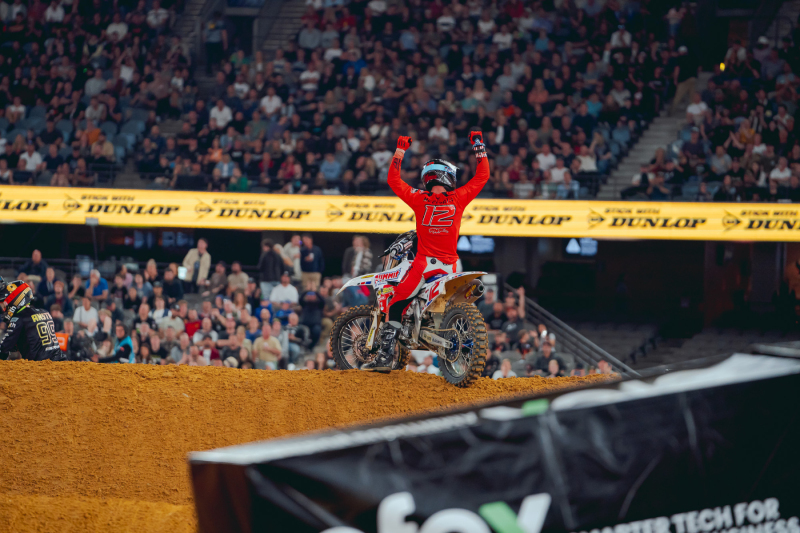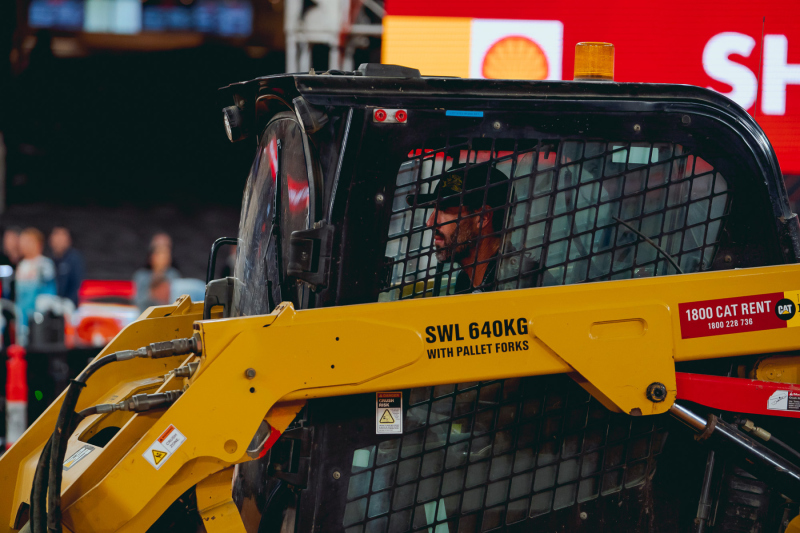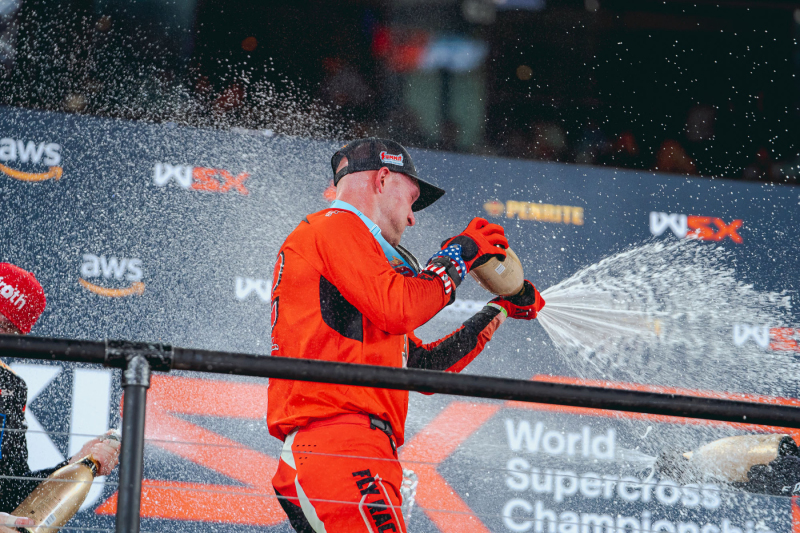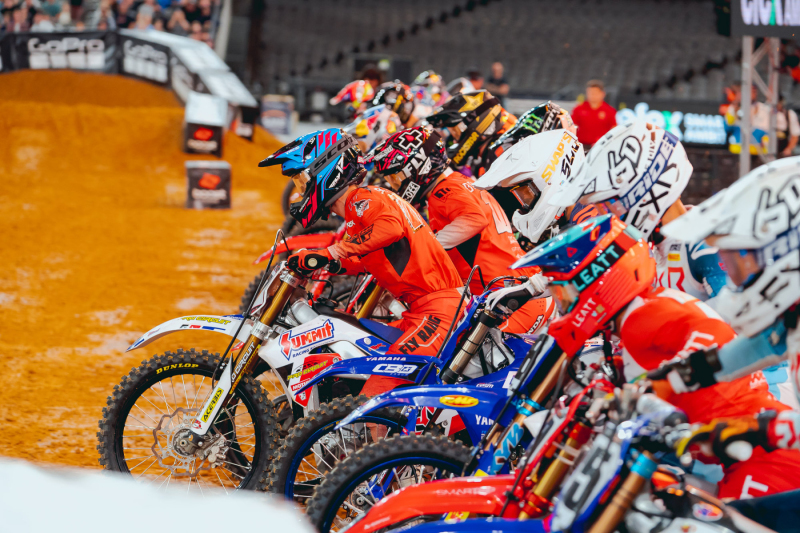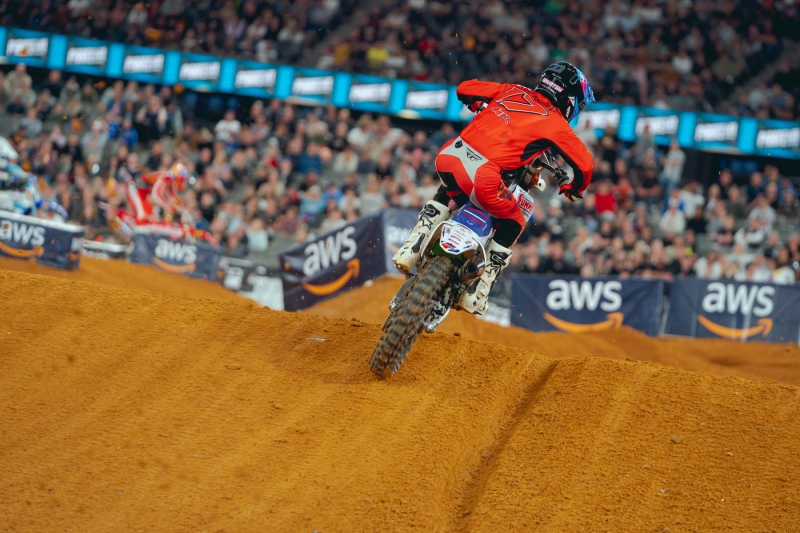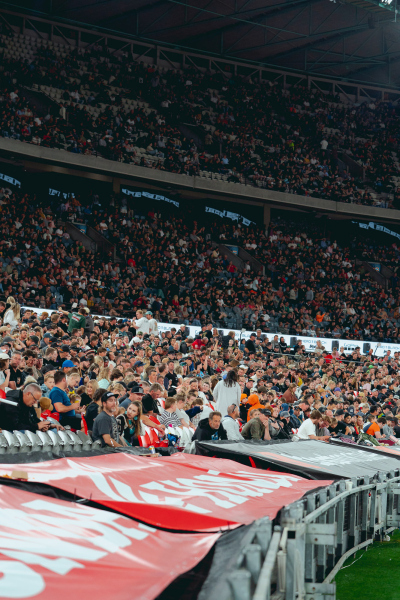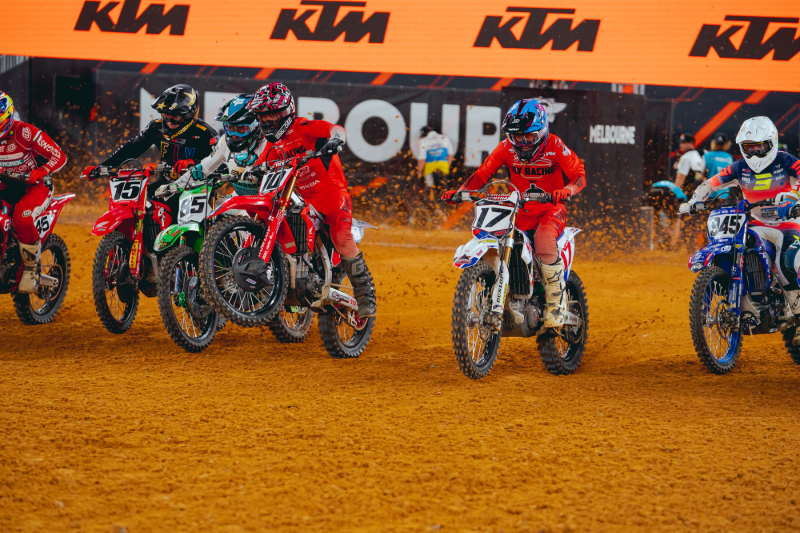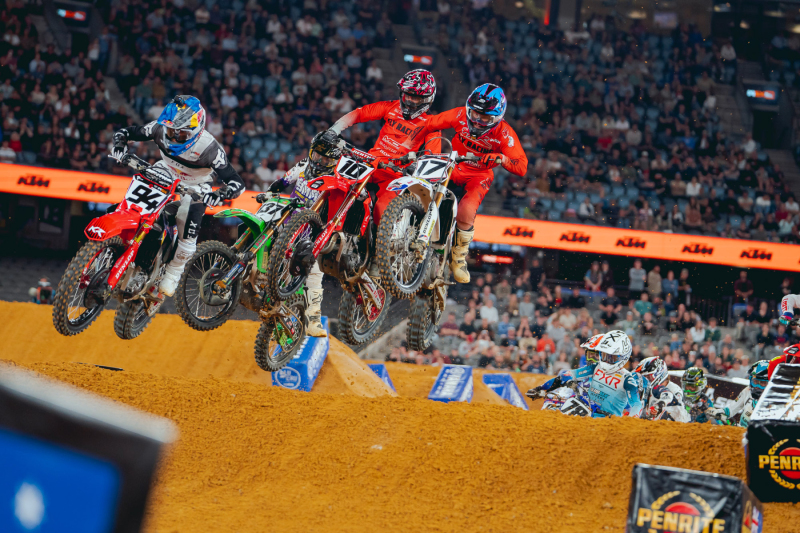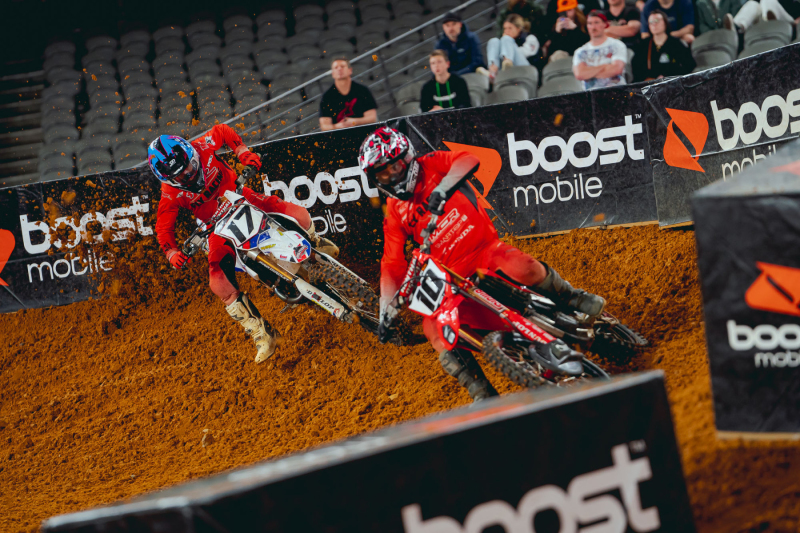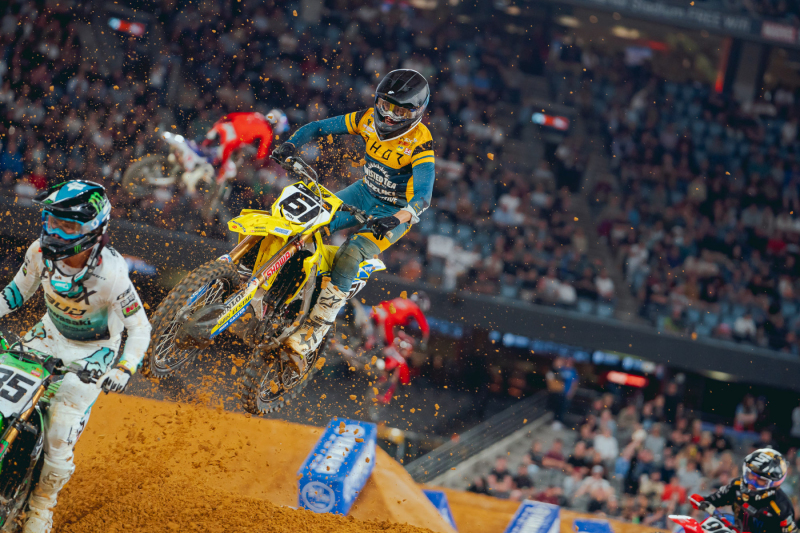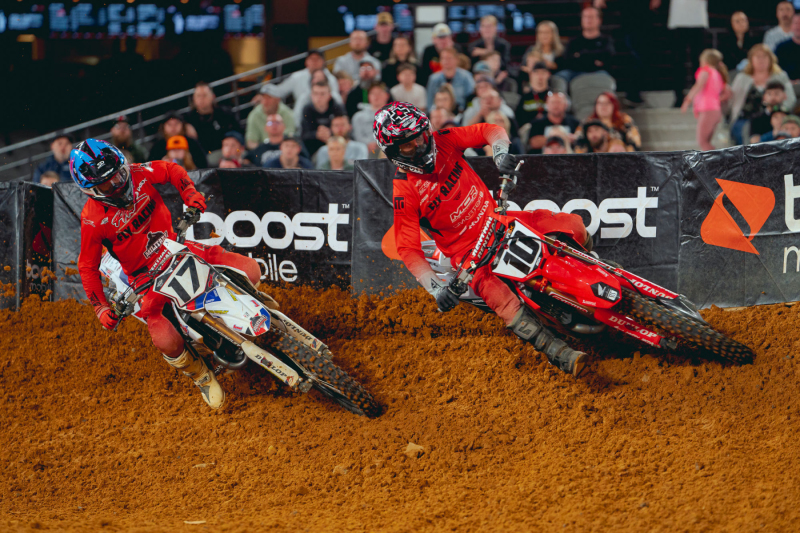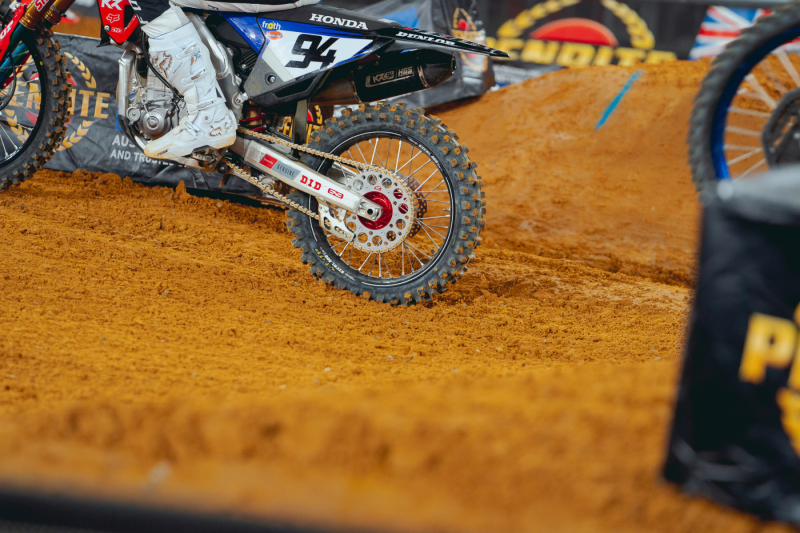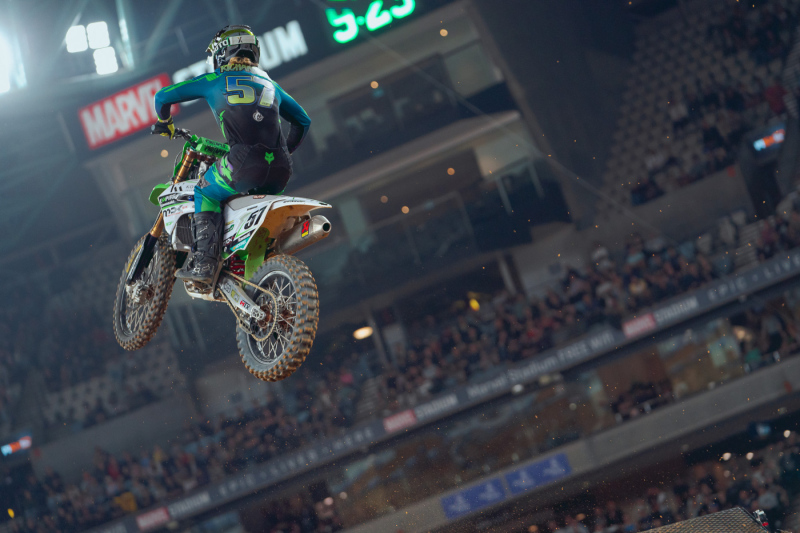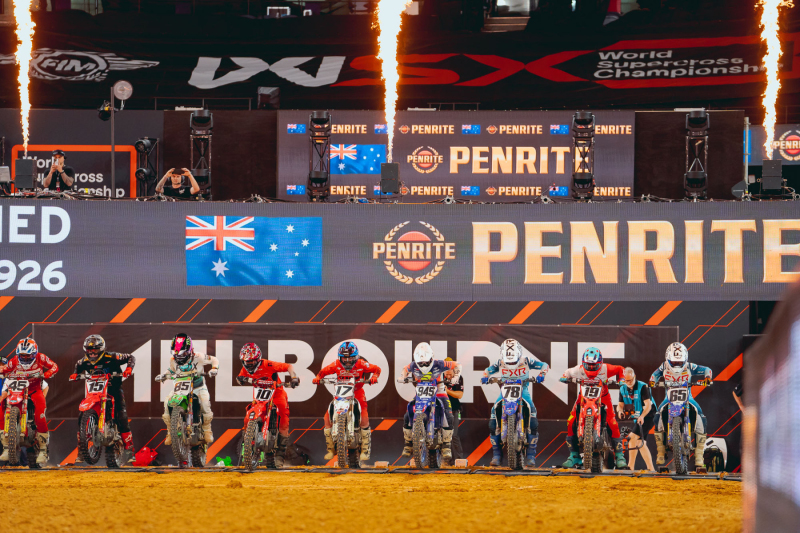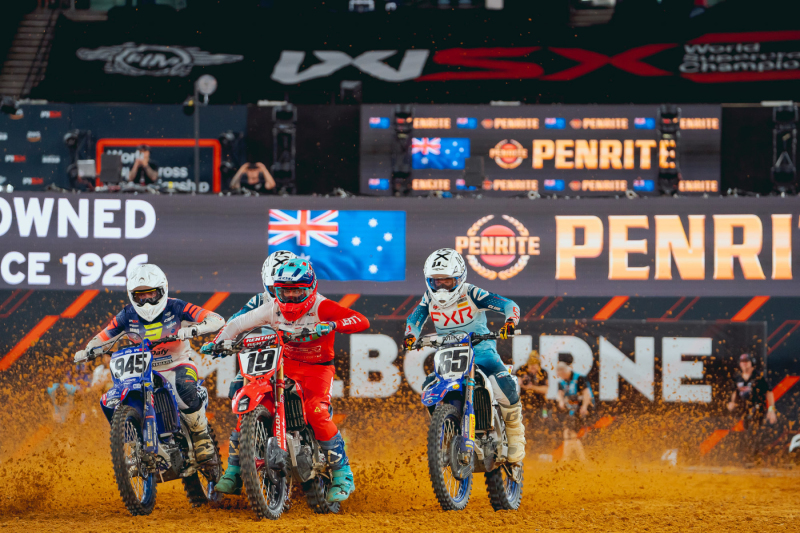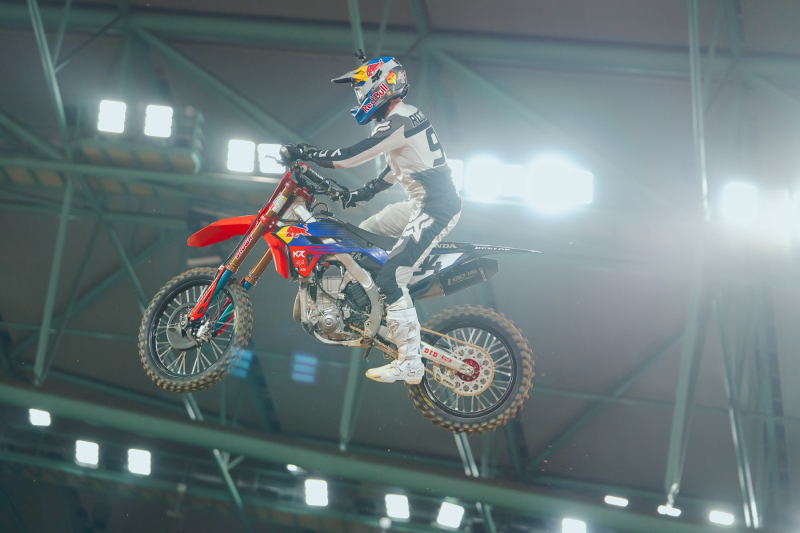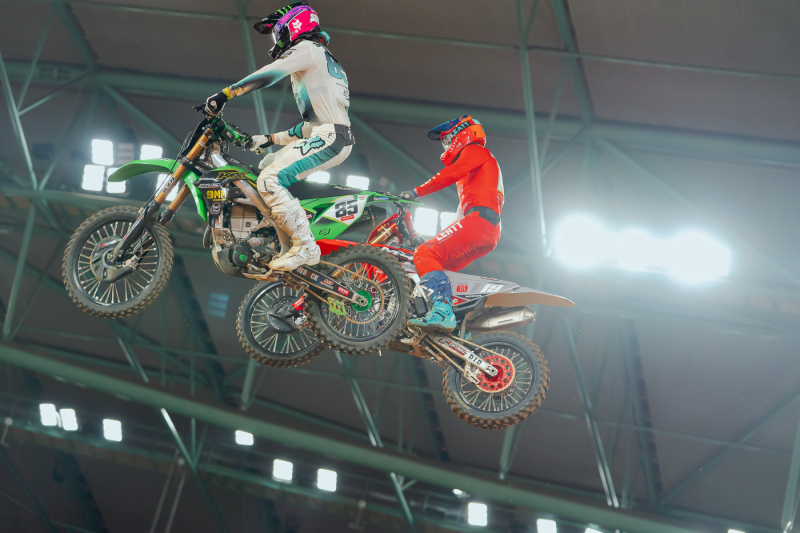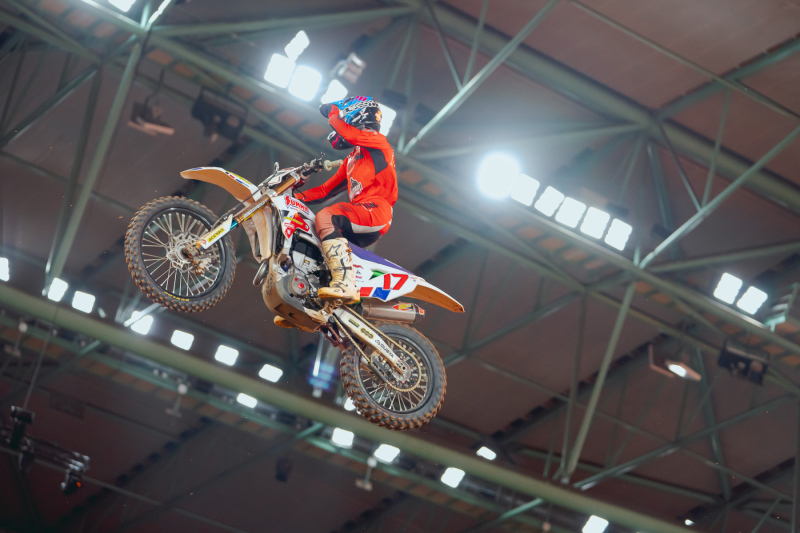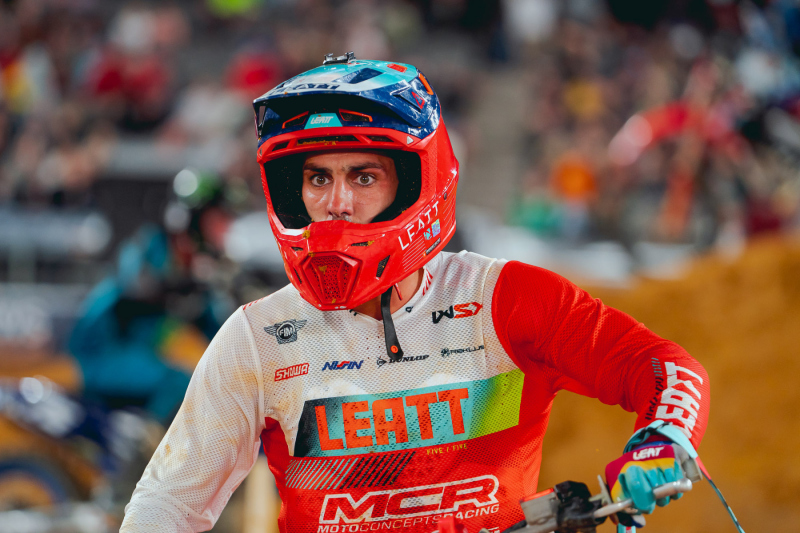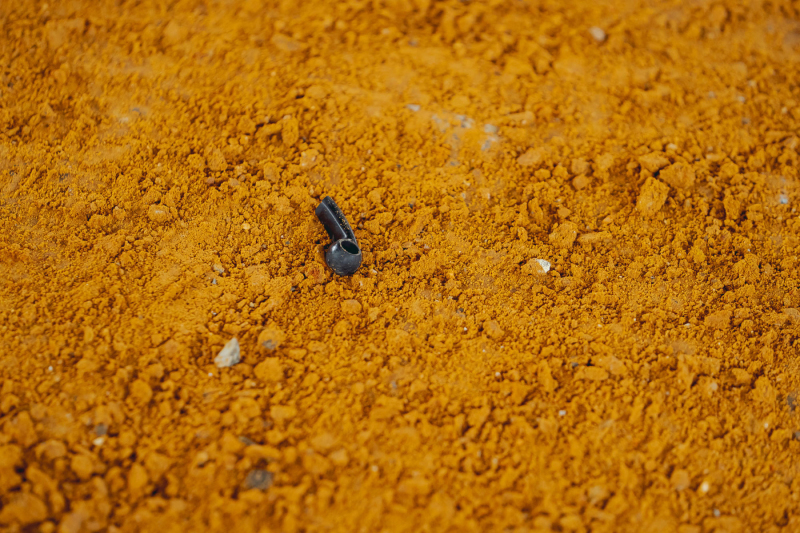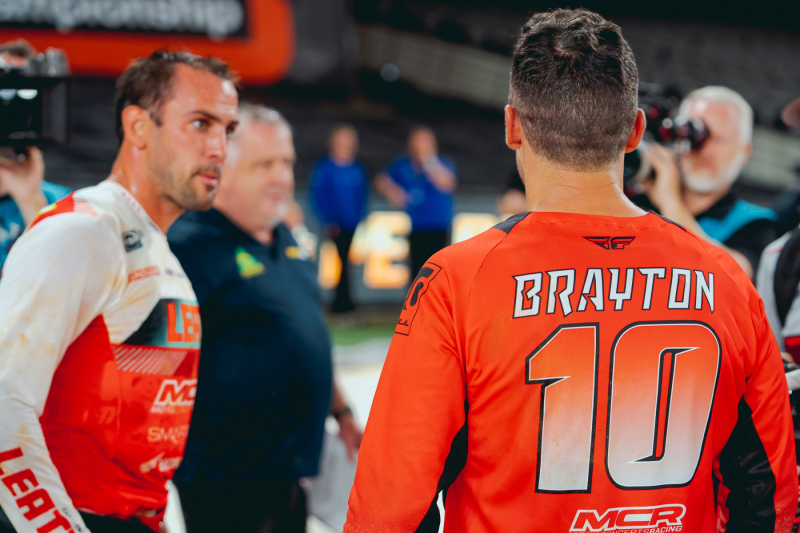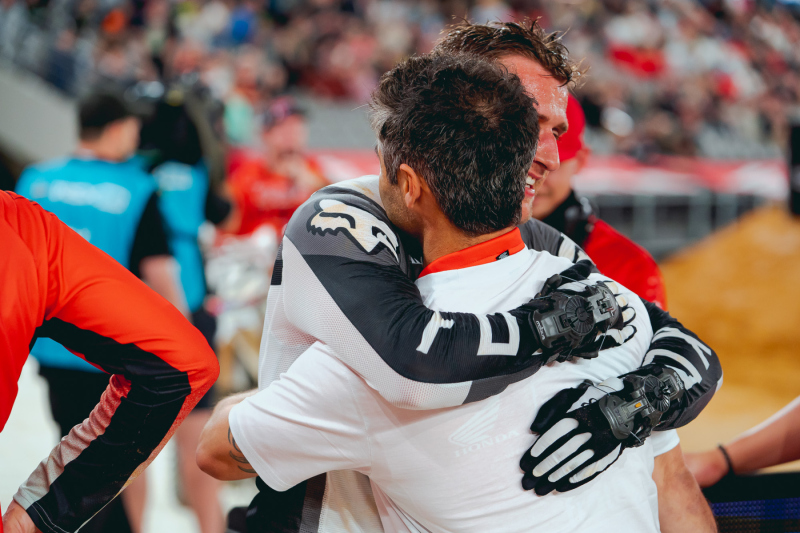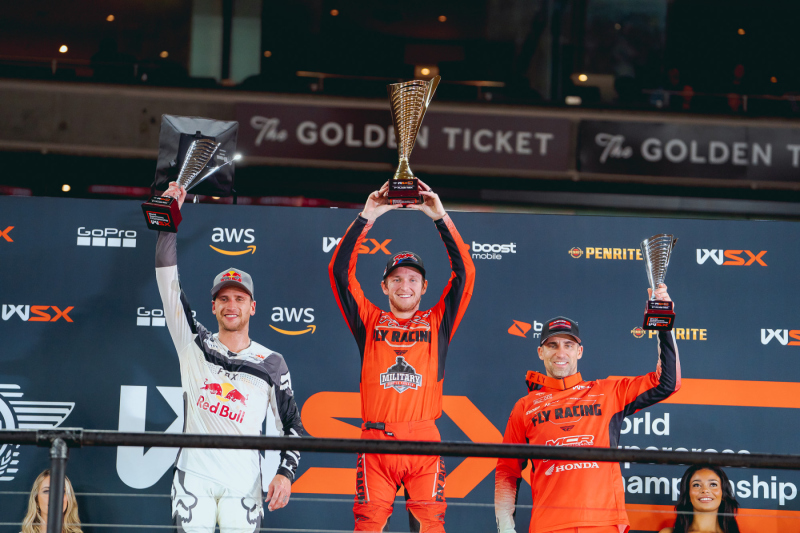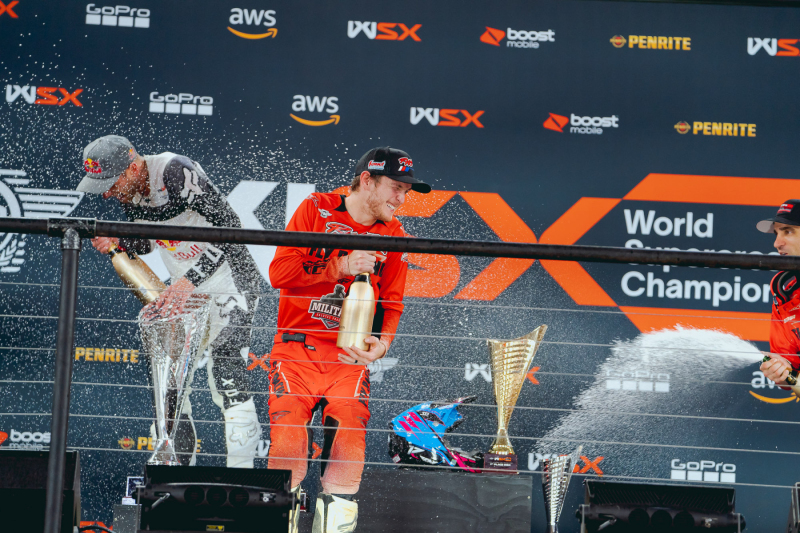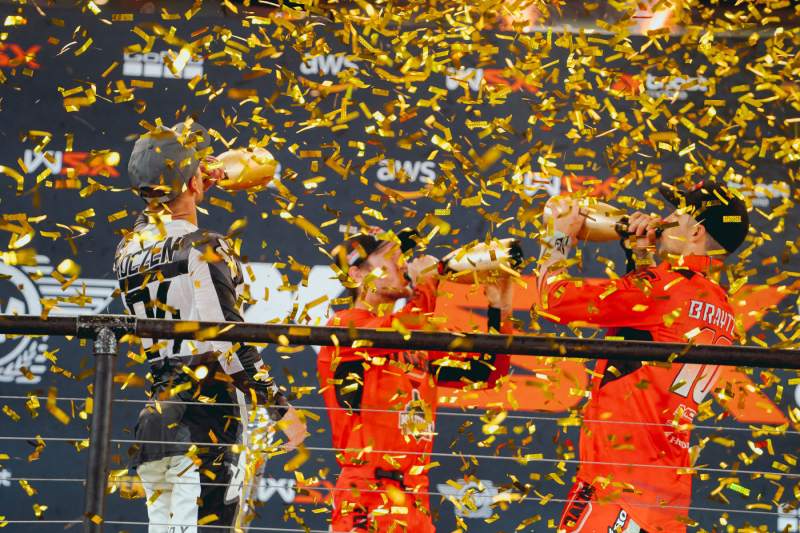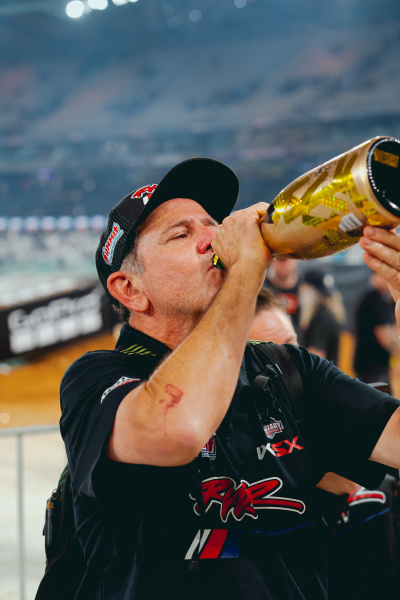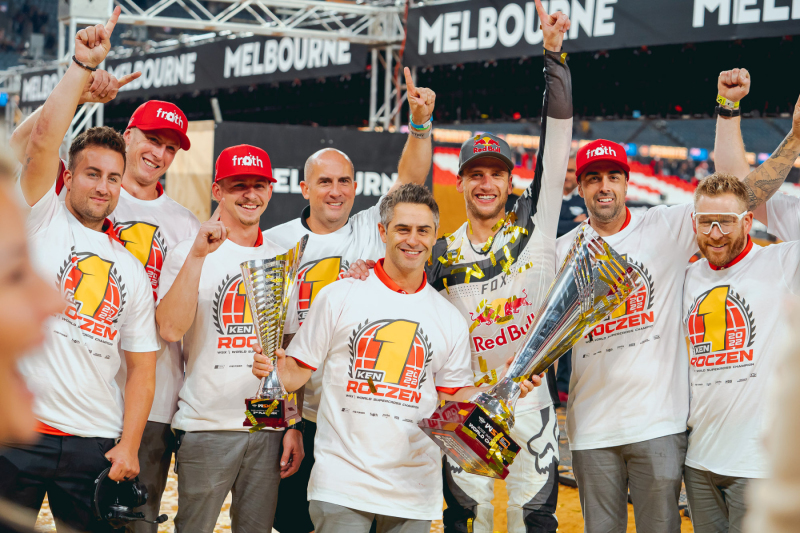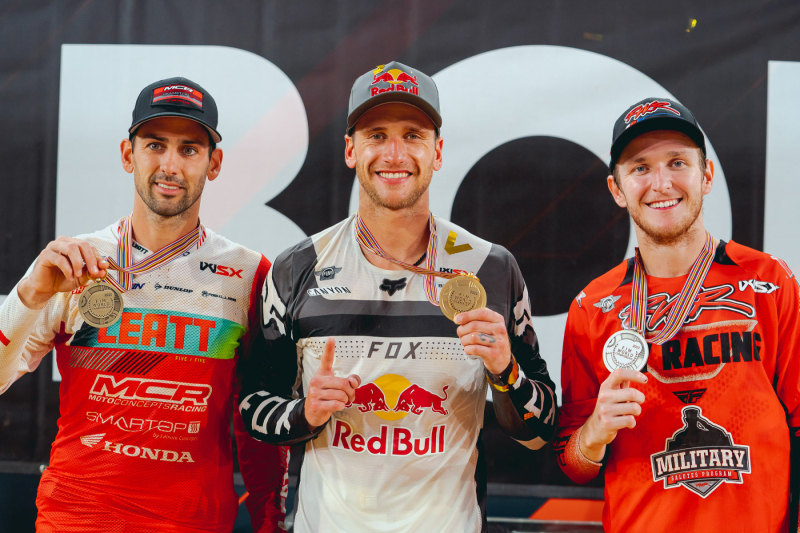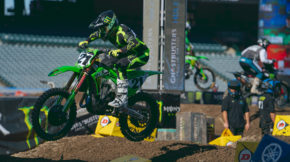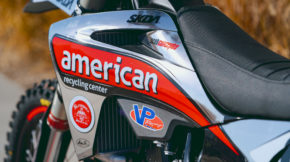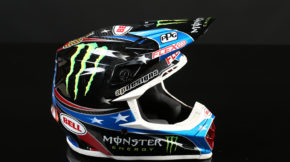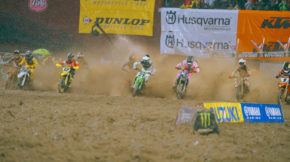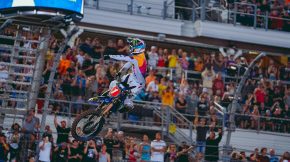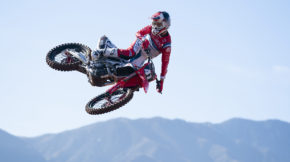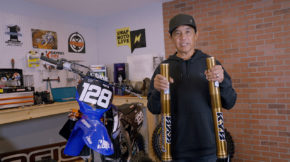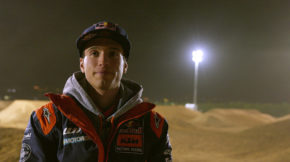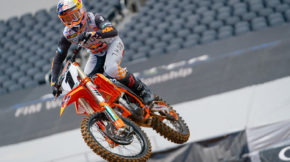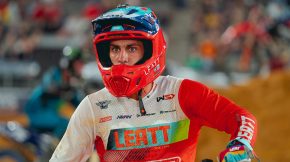2022 WSX Australian GP | Kickstart Recap & Gallery
Share
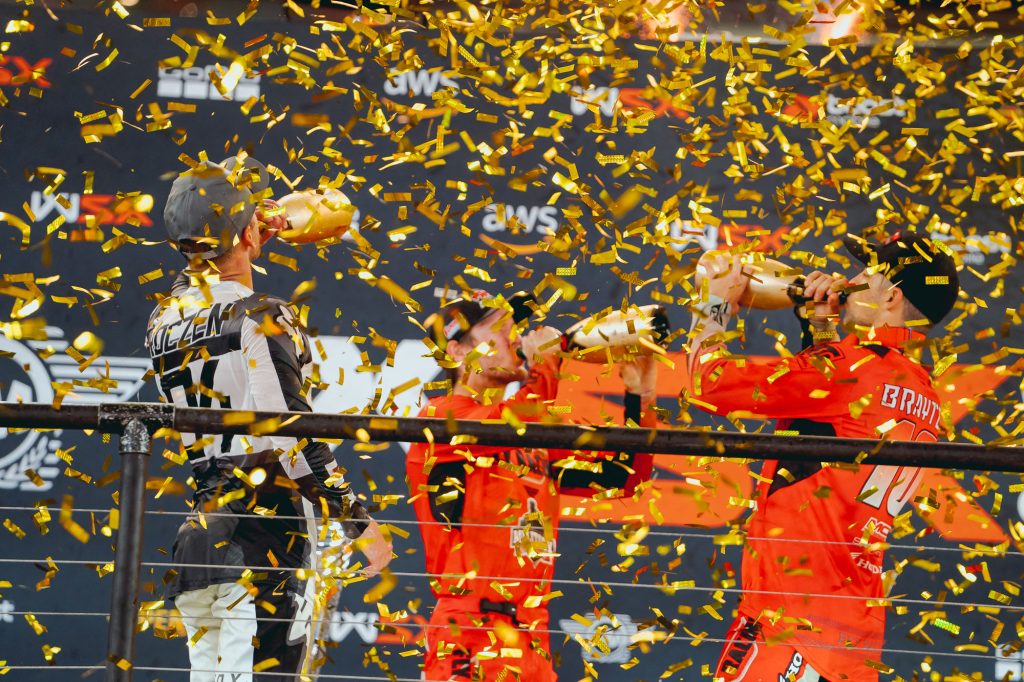
INSTAGRAM | @swapmotolive
INSTAGRAM | @swapmotolivedotcom
INSTAGRAM | @ktmusa
2022 WSX AUSTRALIAN GP | COMPLETE COVERAGE
I stopped paying attention to every WSX press release that hit the inbox at a certain point over the summer. It’s not that I didn’t care about the series; quite the opposite because there were certain times when it was the main topic of conversation with everyone. The phrasing of “taking the sport to new places” included in each message was necessary to drum up hype and establish it as something new, but it wasn’t going to shape what I thought about everything. Seeing the races first-hand was the only thing that could do that, and I committed to going to Cardiff and Melbourne.
The time between the announcement of WSX to its first gate drop saw massive changes for motocross. In ten months, we watched high-profile riders ink SX-only contracts, organizers and teams strengthen their bonds, and got the next half-decade bankrolled from two financial investments (WSX from a sovereign wealth fund, SMX from a television contract). Both sides were committed to the arms race, with announcements and ceremonies that seemed to come within hours of each other, and there was a papabile sense of tension in early October.
It’s no secret that Cardiff came off as a bit unorganized, both on-site and through the television feed, and these were issues SX Global addressed ahead of Melbourne. “I think there were 80 or so negatives and two positives,” reflected Managing Director Adam Bailey during the pre-race press conference in Australia. “We were really tough on ourselves because we are perfectionists, and no doubt this weekend will be the same… There is lots of room to improve that we acknowledged immediately. I think all 80 of those things will be implemented this weekend and we think it will show to the fans.”
Bailey’s statement had little time to hang in the air, because SX Global President Tony Cochrane added his first of many headline-worthy quotes immediately after. “It would be wrong for us to claim that we are running a world championship and then just repeat what they’re doing in America,” said Cochrane. “We’re trying to be different, more experimental, more cutting edge, and attractive to a new global audience. This thing’s got potential beyond anybody’s imagination at the moment, and I don’t see any reason why, in five years’ time, there aren’t 300-400 million Supercross fans around the world. That’s still a dot by the way; if it was a TV set, it’d be four pixels.
“It’ll be the same after this weekend. We’ll go away, assess what we’ve got right, have a very hard look at what we haven’t gotten right, and get it even better for next year,” he continued. “We’ll do that after every single round next year, and guess what: we’ll do it after every round in year five.”
Communication between the teams and the series was the most common positive point we heard after Cardiff, which Bailey stated is key to the series and its future. “Track improvements is something the riders and teams always want to talk about, and I think that into this championship, something we always wanted to pride ourselves on is hearing what the riders think and making sure their safety is paramount. We want the racing to be great, but we want to give them a track they’re comfortable to race hard on. We took a lot of feedback from that. Some things we have improved on for this weekend for sure,” he noted. “Same thing with the scheduling, so there was a little more breathing time between races so the riders can be ready to put on the best show. I think that’s the most important part about our changes. As long as it’s in line with providing the best entertainment, we’ll always make that decision.”
Cochrane immediately added, “That’s really the differentiation between us and perhaps others that have gone before us. For us, the teams are our partners. The teams, principals, and riders are part of our organization. We don’t see them as separate from us; they are part and parcel of what we bring. We are very invested in looking after them, in the pits we present, and in every aspect of their well-being as part of our family. We are much more like a Formula 1 or V8 Supercar group in the sense that the riders and teams are very much part of us. Our decisions are made thinking about them, from go to woe. It’s just a different way of doing it, and I’m not saying other people are doing it the wrong way. We are very conscious of team land, of the team owners, the riders, what they think, and their feedback and how we best work with them.”
So, what was the other positive of the opening round? Cochrane was the first to answer, and although he was absent due to a business trip, he provided plenty of detail. “From a running start, with only four months to get it up, advertised, and on sale in a location that, let’s be honest, isn’t exactly Main Street… to do that was an outstanding effort. But what really pleased me most was the enormous fan reaction to the riders. I had months of people telling me, ‘These guys aren’t known outside of America. You’re mad. This doesn’t count outside of America.’ Well, guess what? It does. People voted with their wallets, as I would say, and that’s the greatest acid test of all. When you have to pay for something, it means you want to go. That’s my observation of people, anyway. I thought the fan reaction was outstanding and gave us tremendous heart and belief in what we’re doing.”
Bailey’s takeaway was much the same: riders and fans were equally excited to meet each other in new places. “The racing being close and intense, that’s the ultimate show and what we’re here to do, to put a show around the racing. That’s very important for the fans. To see the racing the way it was, was really positive. To see the riders engaged and enjoying what they’re doing, I think, is reflective of the show they put on, too. To Tony’s point before, we need the riders to enjoy being part of this championship so that they put on the best show, be there for the fans, sign the autographs, and put in the extra time to go above and beyond. They really did that in Cardiff, and the fans appreciated it. That fan reaction, like kids seeing their favorite riders for the first time, that’s why we’re doing this. I really felt like if we can take that around the world, it can change the game.”
I can vouch for this, especially pre- and post-race. The street between the hotel and Principality Stadium in Cardiff was taken over by WSX on Saturday morning, as banners hung from light posts, vendors sold noisemakers and bootleg shirts, and lunch spots were packed by people who were eager to see bikes on the track. That same area was filled afterward with lads in line for the pubs, some of whom got racers in the afterparty and late-night spots with takeaway food of every type.
Melbourne was different. A walkabout revealed hundreds of people in Fox/Fasthouse/Jett Lawrence shirts, flown in from Sydney/Adelaide/New Zealand for the first big race Down Under since 2019. What the area around Marvel Stadium lacked in food and drink establishments was made up for by displays and activities from marquee brands. SX Global’s ties to Australian motocross certainly were the reason for this, but getting a similar turnout by the industry in other cities will do a lot to establish connections with fans, especially in new markets.
As much as the entry lists for the WSX and SX2 Classes were panned for the average age or recent achievements, the only way to curate a better list of established and unique competitors would be by naming factory riders. Ken Roczen, wild card Eli Tomac, Justin Brayton, Joey Savatgy, Shane McElrath, Max Anstie, and Mitchell Oldenburg brought class-leading speed. Chad Reed, Kyle Chisholm, and Josh Grant were timeless two-wheel heroes that people in both places wanted to see. Josh Hill, Cole Seely, and Justin Bogle threw down over the big jumps and got highlighted in dozens of fan-made social clips. Cedric Soubeyras, Thomas Ramatte, Thomas Do, Angelo Pellegrini, Adrien Escoffier, Maxime Desprey, Anthony Bourdon, and Jordi Tixier showed that Europe had produced plenty of talented riders, while Wilson Todd, Aaron Tanti, and Luke Clout did the same for Australia. Yeah, more star power would certainly give the series some legitimacy, but for a pilot tour, going with riders that are up for whatever or have free time to explore, not the focused few who need to fly in and out as quickly as possible to avoid disruptions to the program, worked out.
I’ll agree that it was difficult to follow the running results at both rounds, Cardiff for the small screens hung high from the rafters, Melbourne for the scoring shake-up after Race Two, and on television from a lack of info. The musical entertainment at all three races was unfamiliar to this 32-year-old American, but all have a massive following, and hiring big acts follows the concert element that F1 has successfully added to some of their races.
The international television package and WSX.tv on-demand site were among the final announcements made before the opening round, and each brought pros and cons. For as necessary as streaming is, getting the races into millions of homes worldwide through reputable partners is still the way to get advertising dollars, reach new fans, and garner attention from possible investors. Unfortunately, these agreements made it so that viewers in America, Australia, and the UK, the biggest markets for networks and audiences, could only use a broadcast partner to watch (UK and Aus) or wait for a delayed airing on television and a 24-hour embargo on the streaming site (US). This sort of blackout is a common issue in sports television as major leagues are all trying to balance television rights and proprietary streaming, so it’s not a shock that WSX is going through the same. One point on the US television slot: having to calculate when a race starts local time to your time, then staying up for it, is what most of the world goes through following AMA SX.
The WSX.tv streaming site and app work well, by the way. It connects to TVs easily, will rewind/fast-forward without skipping, and has a download content option. I bought the pass knowing I wouldn’t be watching the races again until days later, and because doing so covered the 2023 season, too. Videos are run through Viewlift, the same group that partners with Feld for digital assets, and there are some interviews, press conferences, and feature videos only seen through the subscription model. I was surprised by the “Onboard Feed” from Melbourne, which turned out to mostly be overhead shots from the Spidercam that followed the racing or cuts to the onboard footage but no replays or graphic overlays. A Spidercam only or a no commentary/stadium sound feed would be a great addition in 2023, like the FX channels F1 and MotoGP offer.
Details about future venues and seasons made the rounds in Melbourne, some confirmed by Cochrane in the press conference, others shared by those in the pits. Cochrane acknowledged that the 2022 pilot season was supposed to be three rounds, but when it was evident that the location in Indonesia wouldn’t be ready in time, they turned to the UK and Australia. Southeast Asia remains one of the markets WSX has high on its list, though, as the area sees motorcycles both as a means of everyday transportation with bikes powered by small bulletproof four-stroke engines and daring sport with MotoGP racing.
Cochrane said plenty when asked about potential regions, including America, as the topic gave him a chance to say where SX Global sees possible growth and their developing relationships with OEMs.
“We have no fear about going to the US. As I’ve said before, there’s a very good championship there, no question about it, but it’s now a domestic championship, it’s a national championship, not a global championship anymore. I think it’s important for a global championship to go to as many countries as the sport is successful in,” he shared when asked about an event in the US. “Do I think we will go to America next year? Yes, I do. If we don’t go next year, we’ll certainly go the following year. What might blow people away is that we have about nine cities in America wanting us, and so we’re weighing that very carefully at the moment. But not just America but North America, South America, and Central America. Where others might sense fear, we see opportunity.”
“I understand the manufacturers have a big, strong interest in the USA,” he said in a second, separate statement. “The USA represents thirty percent of their market, which is fantastic. But the converse of that statement is, guess what? Seventy percent are sold somewhere else. I’m pretty interested in the somewhere else, and so should they be, by the way.
“The truth of the matter is that we are out there in new markets, but those markets are quite sophisticated in bike culture. I think it’s important for us, an important job we do by default for the manufacturers, the existing seven current manufacturers, the nine manufacturers in this industry within twenty-four months, and ten within three years. What does that tell you? That this business is growing globally. I think we play an important role in showcasing Honda, Kawasaki, KTM, and whoever, and I think in the fullness of time, all of those manufacturers will decide, ‘Hey, these are good guys. They’re actually our friends. We want to jump into bed with them.’ If it takes them three months or three years to decide, it doesn’t bother me in the slightest because we are on our course.
“I’m really excited about Asia. I think the prospects in Asia and Japan over the next couple of years are tremendous. I’m excited about the opportunities in the Middle East, which is opening up so much. Sports like ours can showcase themselves in places like that, which the world has an enormous misunderstanding about right at the moment. Europe is a tremendously exciting market, France and Germany have given us tremendous feedback, and the Scandinavian countries are the same. In Great Britain, we tested the market off-Broadway, but we won’t be quite so off-Broadway next time. Clearly, Central and South America are enormous opportunities. Many of you won’t be aware, but on really good research, the number one Supercross market in the world is Brazil, and they don’t have a single event.
Lastly, Cochrane explained that the calendar would get bigger yearly, starting with an eight-nine race tour in 2023 and going into double-digits soon after. “Our ability to pick up and run with that quickly is challenged because we don’t want to kill the teams either,” he shared. “We’re not going to suddenly go bang, do sixteen rounds next year and kill everyone in the process. We will step through this. If I was a gambling man, I’d say there are eight rounds for sure next year, probably nine. The year after that will rapidly grow to twelve or thirteen, and we’ll be to sixteen by our third or fourth year. The opportunity is there. We just have to manage how we do this.”
We later learned that Marvel Stadium will be the site of the finale for years to come, thanks to a tourism sponsorship agreement, and that trips to France, Brazil, South Africa, and Saudi Arabia are expected to be part of the 2023 series, which is slated to start in July.
All of this leads to the big question: can WSX work? Yeah, it can develop a following, but it’ll take time and effort from all parties, which SX Global is very aware of. The organizer states that 60,000-plus people attended the three events (WSX in Cardiff, Aus SX and WSX in Melbourne), and while that’s a good start for two English-speaking, motocross-familiar regions, the boom or bust numbers will come when it’s time to visit new places. In addition, teams and riders will have to adapt to international travel, a change that will affect their practice schedules as much as their sleep, and all will either need to stay healthy or have replacements at the ready through the very long season. But everyone seems prepared for this, as Cochrane said they expect everything to shape up how they want in years three through five.
“What I particularly like about my Supercars story is that everyone talks about the last five years of it because it was so fantastically successful. But everyone forgets about the shit you go through in the first two or three,” he summarized. “On a scale of one to ten, if one is easy and ten is difficult, this is a thirteen and a half. What makes it so difficult is that we’re doing it on a global scale. I wasn’t in Cardiff because I was in the Middle East and other countries doing business for next year.
“You have to be so open to global ideas, how different people want to operate, and different venues. One of the things we try to focus on is taking these riders to world-class venues, and I think we proved that with Cardiff and here. This is going to sound like an extraordinary statement, but we’ll be going to some better venues next year and some really unique venues, fingers crossed. Anything like this, you build from the ground up, is really tough, and there is no easy way of doing this. It takes incredible patience, real imagination, and a fair degree of stupidity. Anyone with a sane brain wouldn’t attempt it. It is a really tough gig, but I think it’s an important gig. I like doing shit that is really important, being out there on the edge. It’s so easy to be home and be safe, but this is right there on the edge. I think we have a team around us who share that passion and belief, who can see we can turn this into a global opportunity and a global sport. We’re the very first Australian company ever to take on an FIA or FIM world championship, and we’re quite proud of that.”


